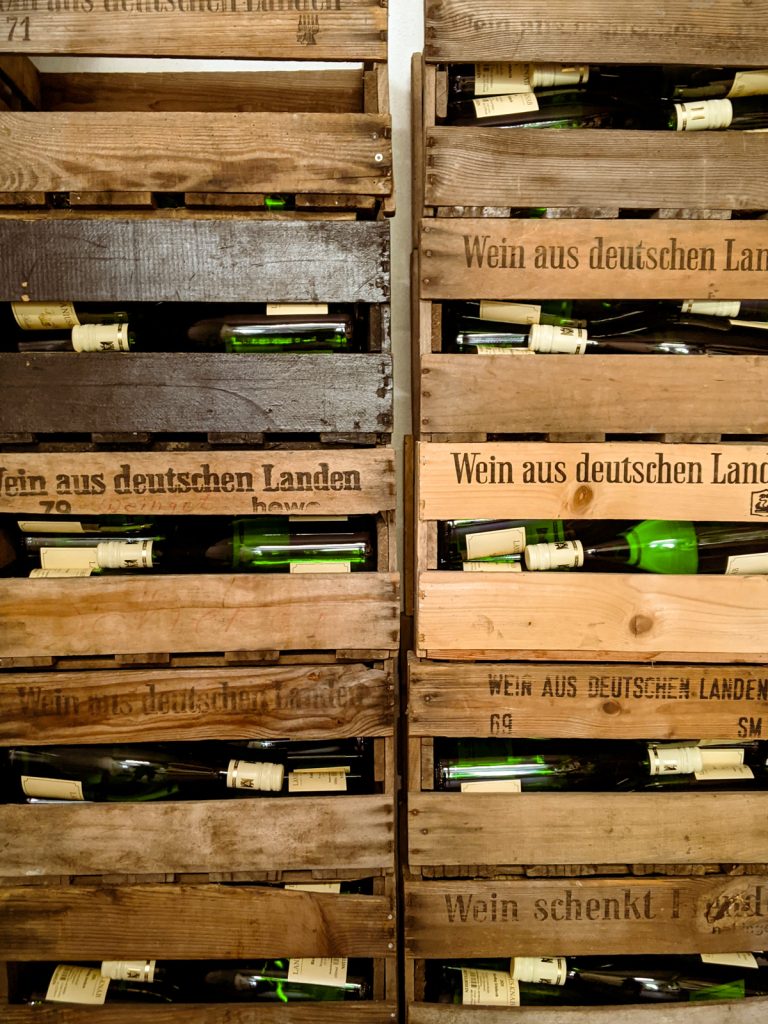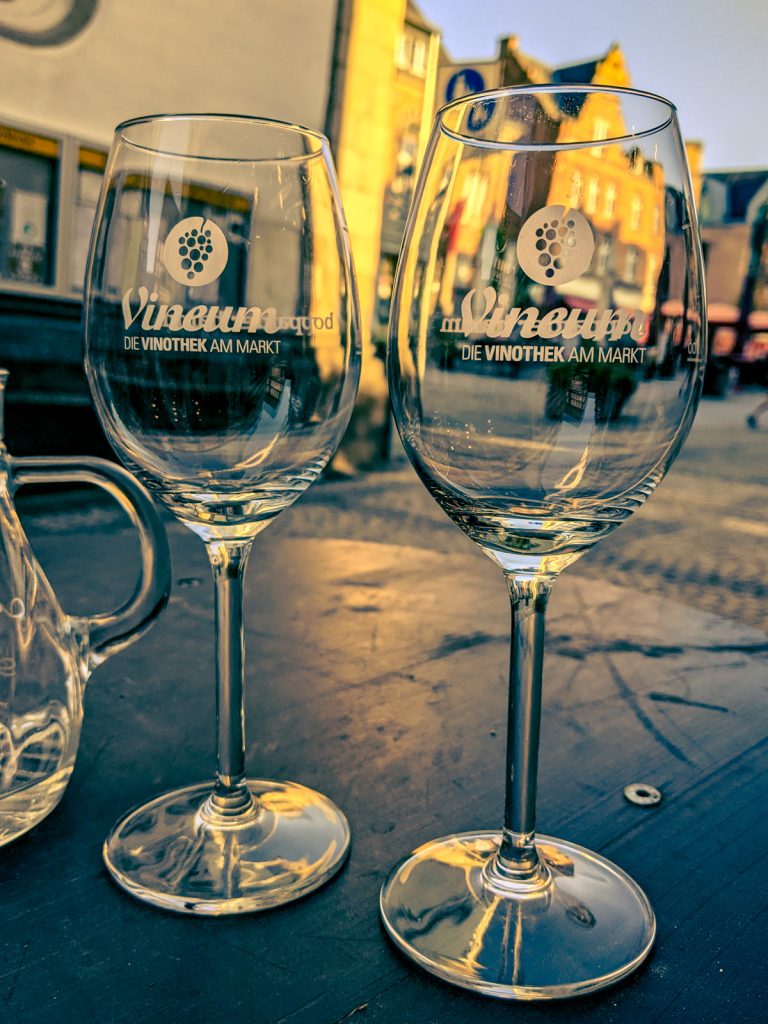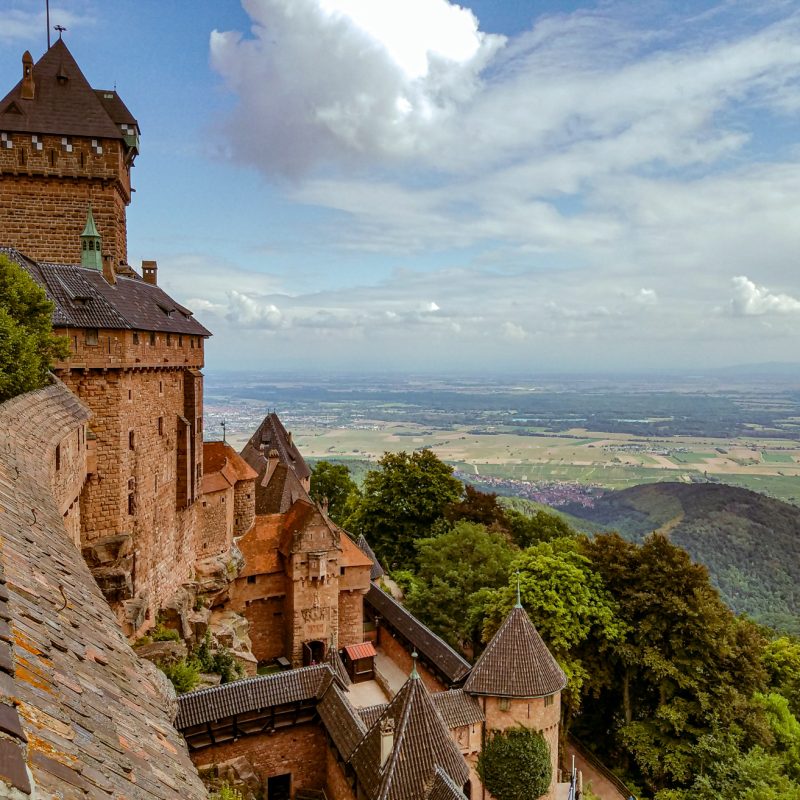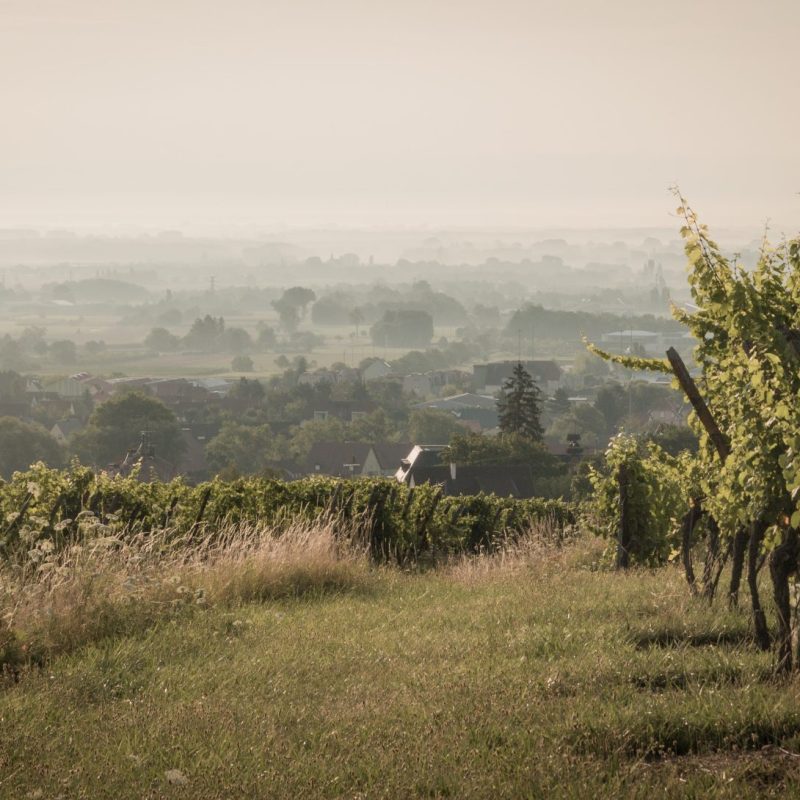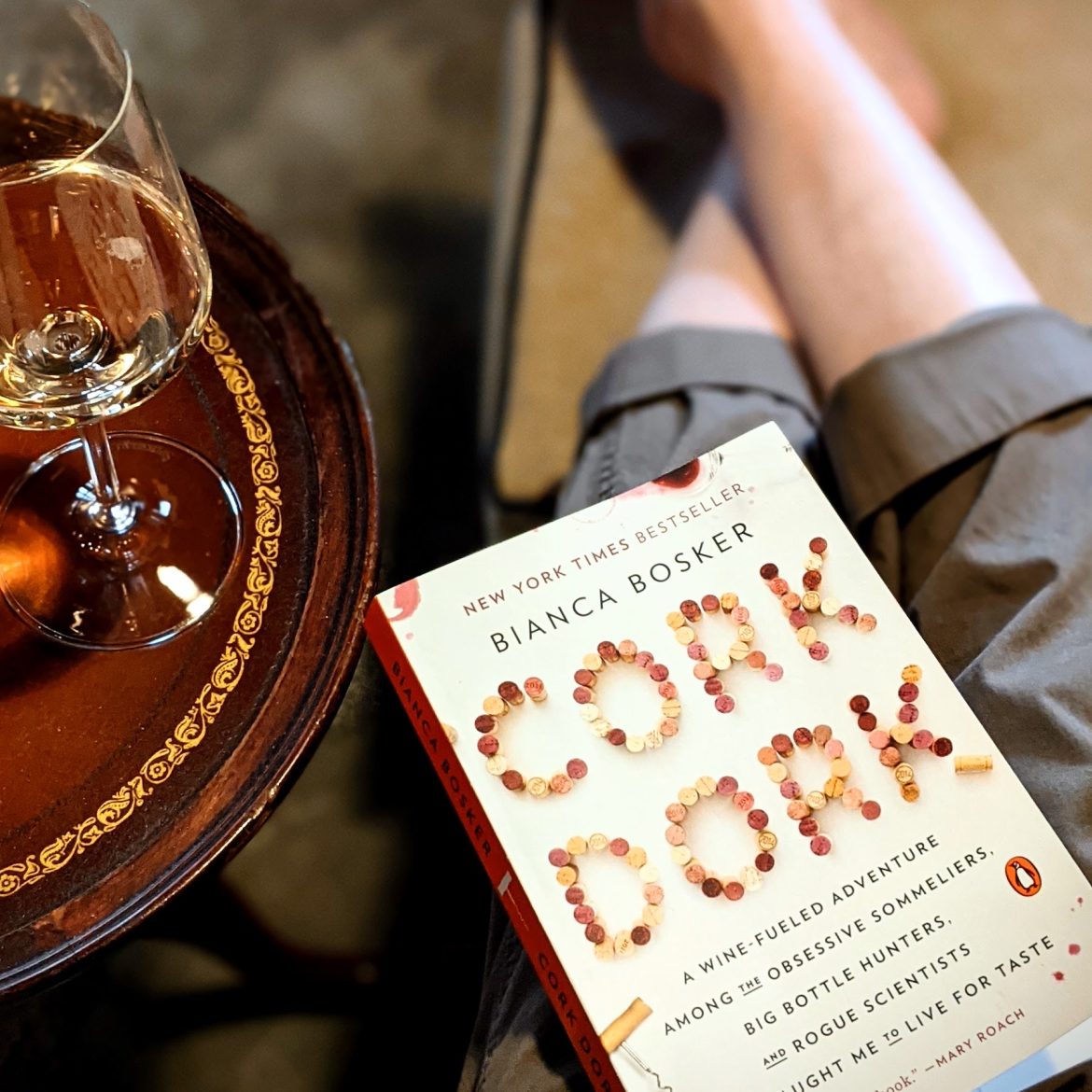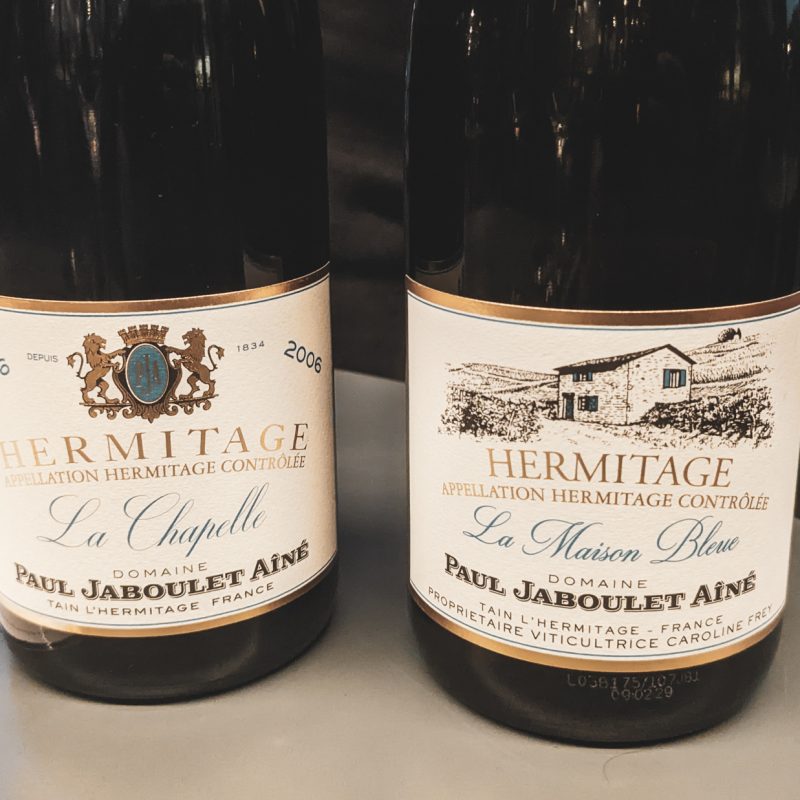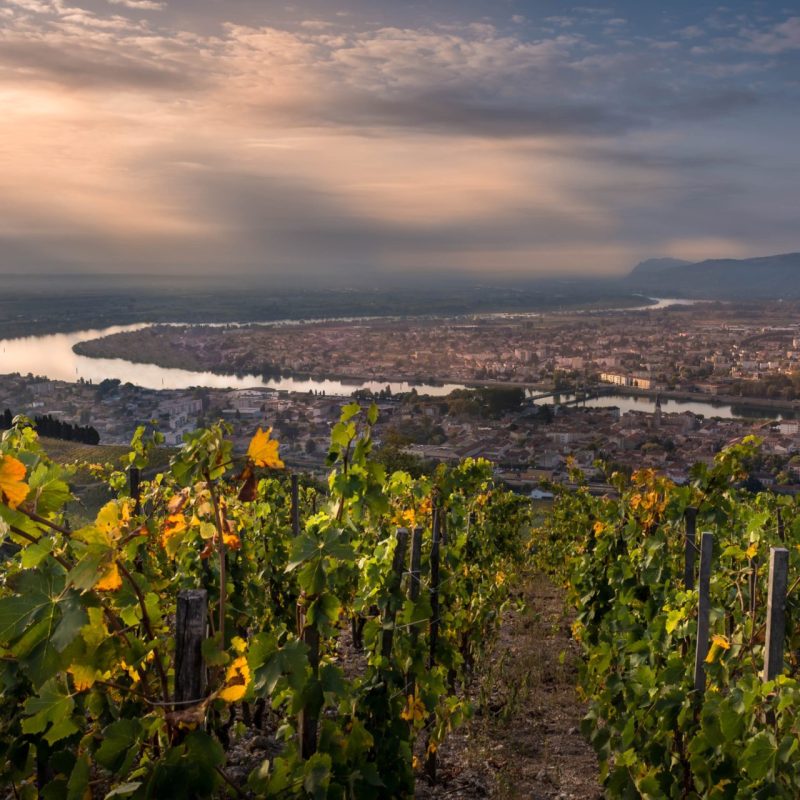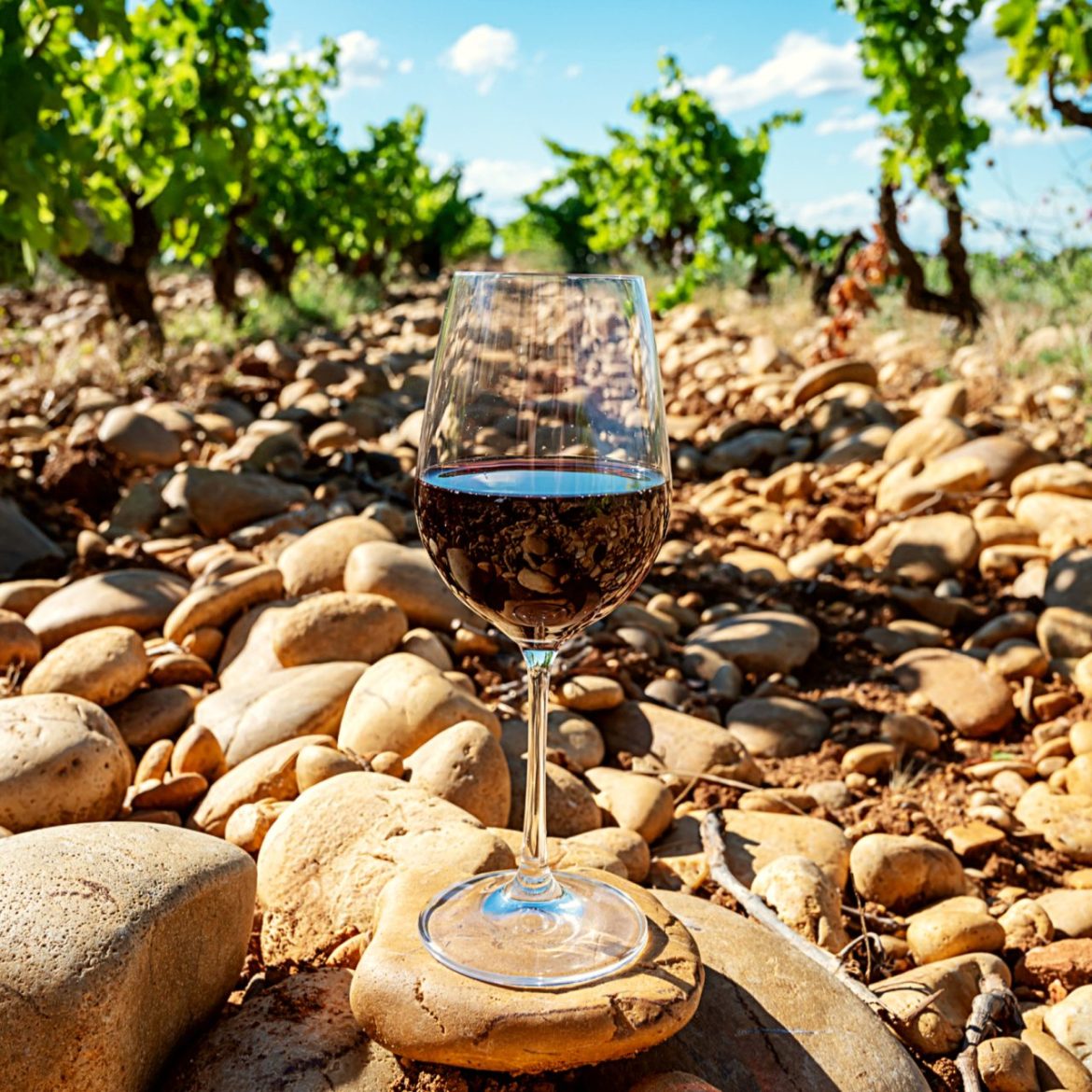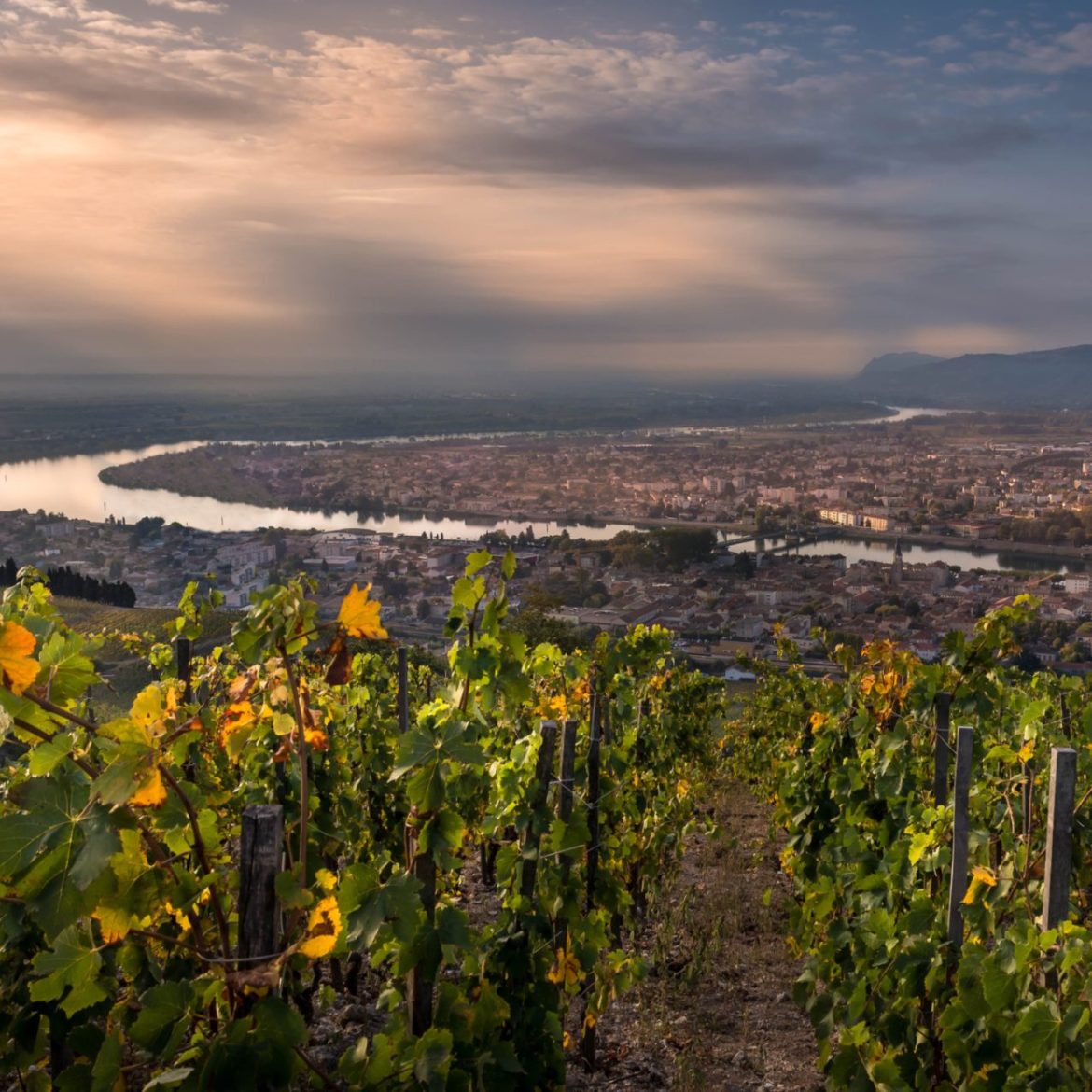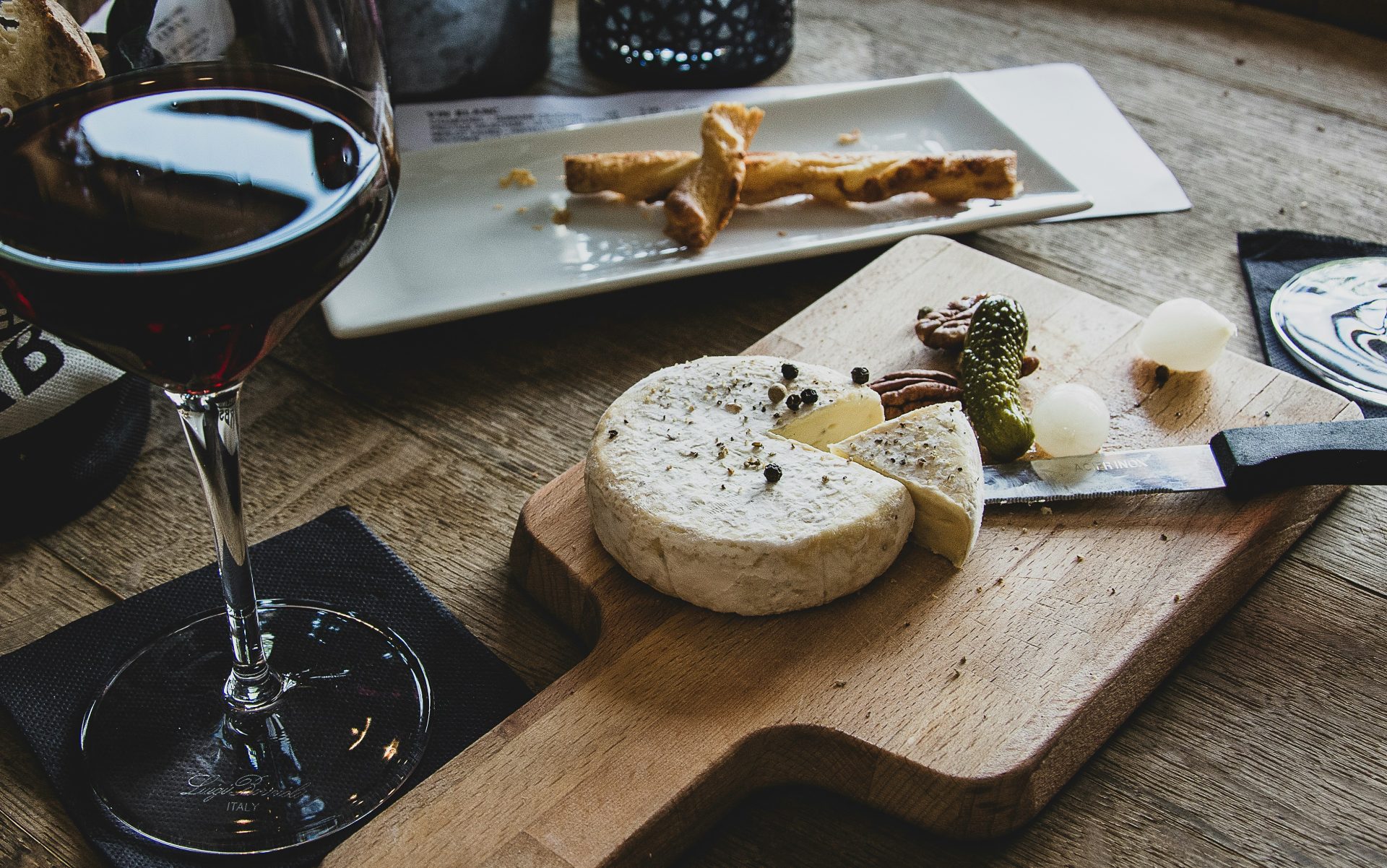
Master At-Home Wine Tastings
Traveling to a new wine destination is exciting! You have the chance to learn first-hand about the region and its grape varieties. Even if you’re knowledgeable about wine, exploring in the region and seeing the vineyards, the slopes, the soil, and the sunlight helps you gain far more appreciation for the wine. You can really dig into the culture and terroir that makes the wine special, and it helps solidify your knowledge.
However, there are times when tasting at home can be helpful. Maybe you want to do a bit of wine research before you travel. Or maybe you don’t have a trip planned, but you want to taste the wines of different regions while you wait for travel plans to come together. Also, by exploring different wines at home, you discover wines you love, and it helps you decide which region to visit next.
We might receive a small commission if you purchase products through our affiliate links. However, this does not impact our reviews and recommendations. We only promote items we have tried and think you’ll enjoy.
We’ll help you plan the perfect tasting at home.
Download our wine-tasting kit
Created by our Founder, Michelle, and used for her private wine events. It’s so handy that we’re giving it to you for free.
The kit includes: A Tasting Guide, Tasting Cards & Wine Tags
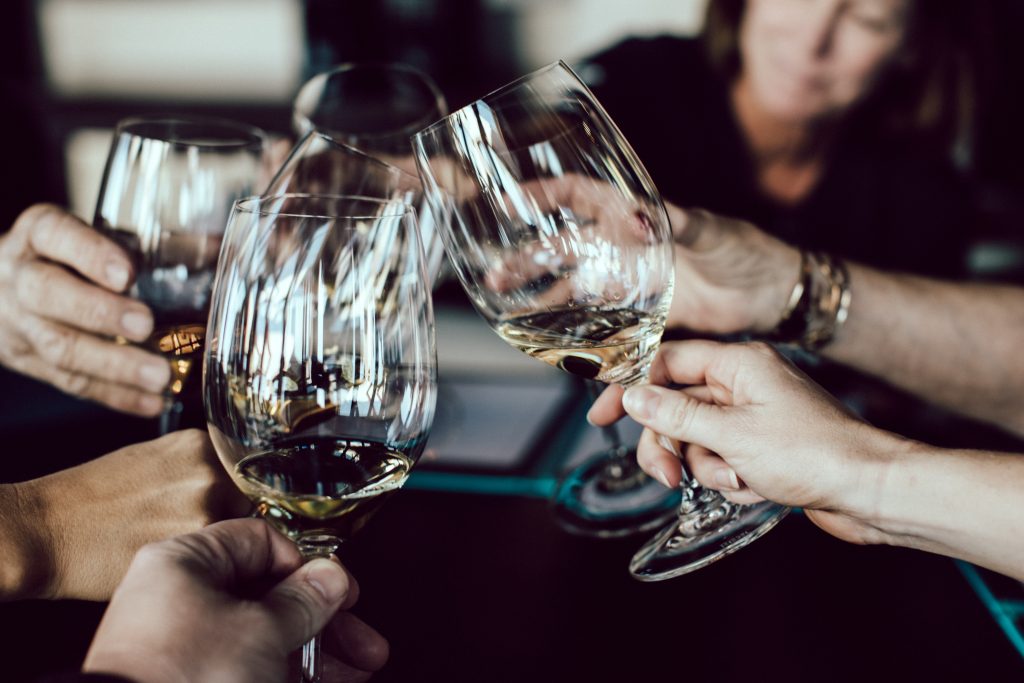
Host a wine tasting!
Invite a group of your fellow wine enthusiasts to get together with a theme for wine tasting. You can decide on the theme and allow your friends to pitch in with wine or food. Or, if you’re feeling up to the task, you can play the part of sommelier and wow them with your wine knowledge and skills.
Here are a few tasting themes to get you thinking. Be sure to let us know what themes you create for your tastings, and tell us about them on Instagram or Facebook.
4 Examples Wine Tasting Themes
1. Taste a Region:
Pick at least 4 wines from a specific region and keep it varied by including a sparkling and a mix of white and red wines.
2. Compare Across Different Regions:
You can choose the same grape variety from different regions. For example, you can choose a Riesling from Germany, Alsace, and Austria.
3. Volcanic Wines:
Taste wines from Sicily and Greece, where the flavors of volcanic soils add a pronounced flavor.
4. Old World -versus- New World:
Compare Cabernet Sauvignon and Merlot from Bordeaux versus Napa Valley. Even better, do a blind tasting and see how many of you can correctly guess if it’s France or California. Have a prize for the person who gets the most right.
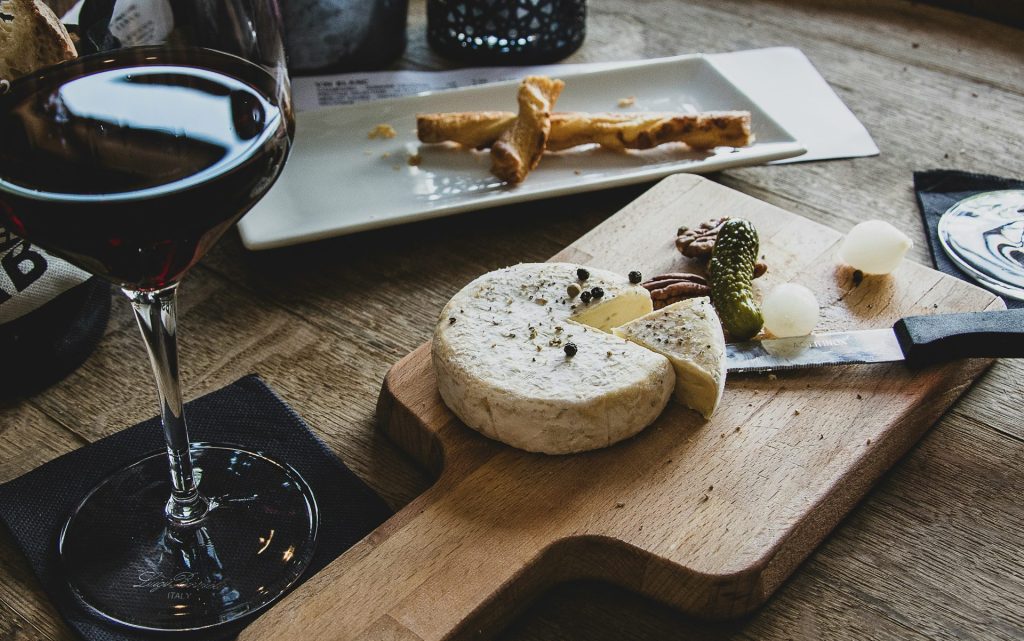
5 tips to help you plan a wine tasting at home.
1. Lighting
Make sure the area is well-lit and you have a piece of white paper to judge the color of the wine.
2. Aromas
Keep the space free of any intense smells like perfume, air freshener, or candles. You’ll want to smell the wine aromas; other strong smells can get in the way.
3. Consistency
Use the same style of wine glass for each wine you’re tasting to help make apples-to-apples (or wine-to-wine) comparisons. You don’t need special glasses for different types of wine, so don’t worry if you don’t have the perfect pinot glass for that Burgundy. And never use a fluted glass for champagne; you can use a standard wine glass.
You can keep a supply of the same glasses to use for reds, whites, sparkling, and everything in between. We’re fans of the Spieglau wine glasses for everyday tasting, but there’s something special about drinking great wine from a luxury glass on occasion.
Our recommended glasses:
4. Pairings
Have some snacks available so that people can compare the wine on its own and how it might change with food. Salt and umami flavors are perfect for pairing.
“If it grows together, it goes together” is a good rule of thumb for pairing wine and food. Think parmesan and pasta with Chianti, meat ragu and risotto with Barolo, brie and camembert with a Burgundy (red or white), goat cheese and Sancerre from the Loire Valley, tapas with Spanish wines, etc.
5. Notes
Take notes. It’s a good idea to practice taking notes when you’re tasting. If you keep consistency in your note-taking and cover the same points each time you taste, over time, you’ll be able to run through a tasting checklist quickly.
Hit these points each time:
- Note the producer, the vintage, the region, the price, the retailer where you purchased the wine, and any other details
- The Appearance: Note the color and clarity
- The Nose: Note the aromas
- The Palate: note flavors in your mouth and other things like the body, acidity, and tannins
- The Conclusion: Sum up the finish, balance, intensity, and complexity, and draw your own conclusion about the wine.
Don’t Forget…
We’ll help you plan the perfect tasting at home.
Download our wine-tasting kit
Created by our Founder, Michelle, and used for her private wine events. It’s so handy that we’re giving it to you for free.
The kit includes: A Tasting Guide, Tasting Cards & Wine Tags
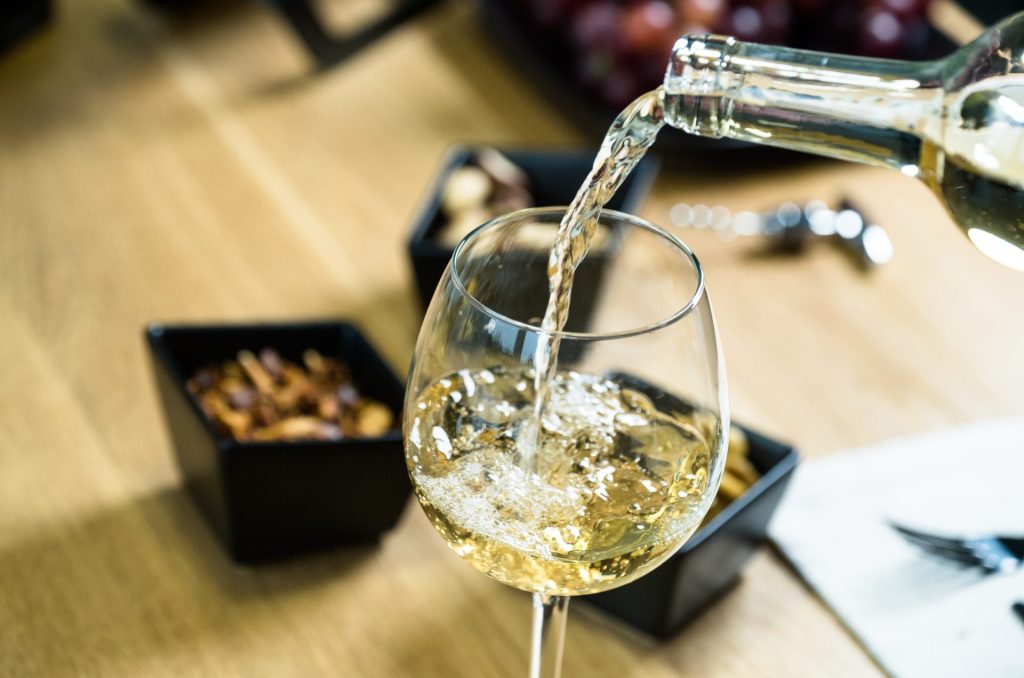
Start your wine tour search here.
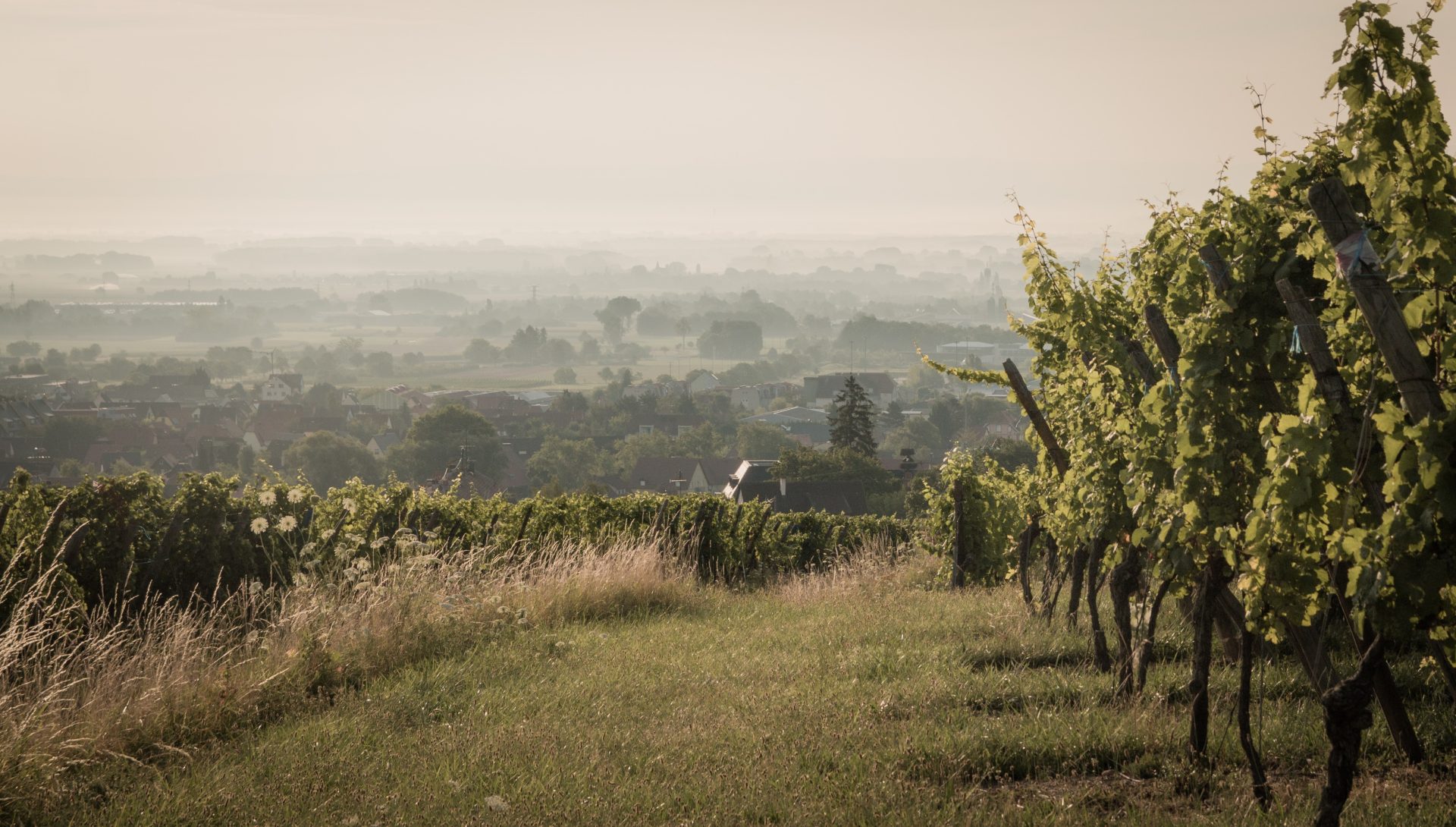
Comprehensive Guide to Alsace Wine Classification System
Unlike some other wine regions, the Alsace appellation system is relatively simple. There are two main classifications for still wines: Alsace and Alsace Grand Cru. Because of its simplicity, some producers use language on labels to try to distinguish between their different qualities of wines. You might find the terms ‘Réserve Personnelle’ or ‘Cuvée Spéciale’ on labels, but they don’t have any legal status within the classification system; they are just some terms the producers use.
It’s important to know that the noble grape varieties are: Riesling, Muscat, Gewurztraminer, or Pinot Gris. In Alsace, the best wines will be 100% of a single variety, and bottles will be labeled with the name of the grape.
Your Guide to Alsace’s Wine Classification System
Alsace AOC (appellation d’origine contrôlée)
The ‘Alsace’ appellation accounts for the majority of the wine produced in the region. Most wines are made from a single grape variety, and the name of the grape will be on the label, unlike some other areas, like Burgundy, where the region names are on the label rather than the grape variety. In Alsace, if the grape variety is listed on the label, 100% of the wine is produced from that single variety.
It’s rare, but there are cases where the villages have the right to add their name to the appellation on the label for certain styles; however, for the vast majority of the wines in this appellation or classification, you’ll only find the grape variety on the label.
Alsace Grand Cru
The top quality wines in Alsace are Grand Cru wines, and there are more than 50 vineyards that have their own Grand Cru classification.
Alsace Grand Cru wines must be produced from a single noble grape variety. But, as always, a few rare exceptions exist. The label on Alsace Grand Cru wines must have the vineyard name, the vintage, and the name of the grape variety and will include the term ‘Grand Cru’. If you’re looking for the best of Alsace wine, look for Grand Cru wines.
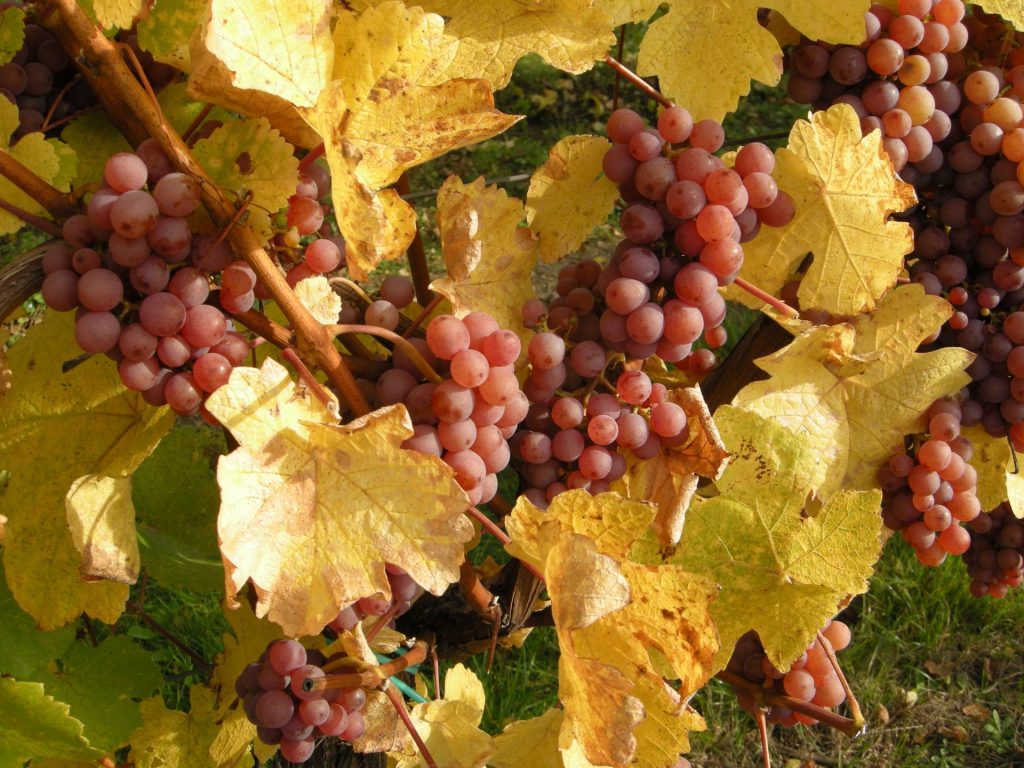
Two other classifications of Alsace wines depend on the sugar level of the wine and can be either the Alsace or the Grand Cru appellation.
Vendanges Tardives (VT)
This means ‘Late Harvest’, and the wine must have a minimum sugar level depending on the grape variety. Here again, the wine can only be made from one of the four noble varieties. The sugar levels required are a minimum of 235 grams per liter for Muscat and Riesling and 257 grams per liter for Pinot Gris and Gewurztraminer.
In the best examples of Alsace late-harvest wines, the grapes will have dried on the vine, turning to raisins and concentrating the sugars and flavors, which is known as ‘passerillage’.
VT wines may or may not be affected by botrytis.
Sélection de Grains Nobles (SGN)
These grapes are required to be affected by botrytis or ‘Noble Rot’. Here, the minimum sugar level must be higher than in Vendanges Tardives wines: a minimum of 276 grams per liter for Muscat and Riesling and 306 grams per liter for Pinot Gris and Gewurztraminer. Again, only the noble grape varieties can be used for SGN wines.
Other Labeling Terms
Gentil and Edelzwicker
These are terms on Alsace wine labels that designate that the wine is a blend.
Gentil must be from at least 50% noble grape varieties, and the remainder can be any other Alsace grape variety.
Edelzwicker means ‘noble mixture’ and is an inexpensive blend of wine.
Cremant d’ Alsace
The sparkling Crémant d’Alsace can be a delicious value. Pinot noir is the only red grape allowed in Alsace AOC wines and may be included in these sparkling blends, but Pinot Blanc is generally the base variety. Crémant d’Alsace is also the only appellation in the region to allow Chardonnay in the blend.
Don’t Miss: Learn more about Alsace, France
Discovering Alsace, France: A Paradise of White Wine
You’ll find the picturesque Alsace region in northeastern France with...
Start your wine tour search here.
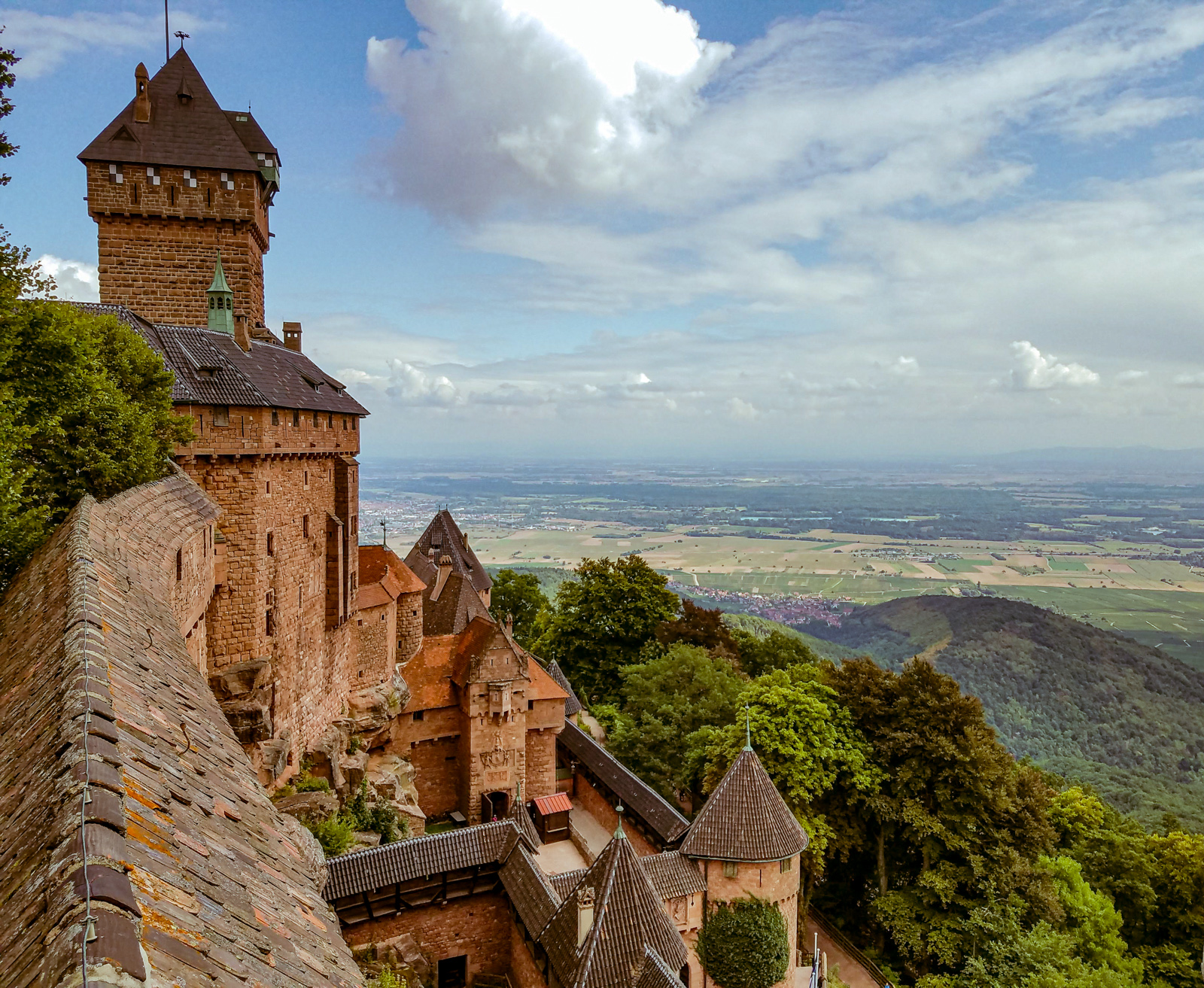
Discovering Alsace, France: A Paradise of White Wine
You’ll find the picturesque Alsace region in northeastern France with breathtaking landscapes and charming medieval villages. Sharing borders with Germany and Switzerland, Alsace is a unique fusion of French and German cultures that are reflected in its architectural, culinary, and winemaking traditions. The region has a rich history, beautiful scenery, delicious food, and, most importantly to us, exceptional wines.
Alsace enjoys a sheltered position, nestled between the Vosges mountains and the Rhine River, resulting in a continental climate with warm, sunny days and cool nights. The region’s diverse soils and geological history add complexity to the wines, giving them a terroir-driven character and contributing to the variety of wine styles produced. In the Alsace region, you’ll find wines that range from rich and full-bodied to young and fresh styles, as well as lusciously sweet.
The Grape Varieties of Alsace
One of the most interesting aspects of Alsace wines is the focus on bottling single-grape varieties, not blends of varieties, allowing each to showcase its distinctive characteristics.
The region is famous for producing four primary grape varieties, often called the ‘noble varieties’: Riesling, Gewürztraminer, Pinot Gris, and Muscat, but Alsace also produces a range of grape varieties, so we’ve included a fifth that you’ll also find in the region.
Riesling
Often considered the king of Alsace grapes, Riesling is the most planted of the noble varieties, and the best examples yield dry and crisp wines with hints of green apple, stone fruit, lime, and often, a mineral, stony note. Renowned for its longevity, Riesling from Alsace can develop a profound depth of flavors over time. Yes, Riesling can age!
Gewürztraminer
Known for its exotic and aromatic profile, Gewürztraminer offers an opulent bouquet of lychee, rose petals, and tropical fruits. In a blind tasting, the heady rose aroma will give it away every time. These wines tend to be rich and full-bodied, with low to medium acidity, making them a delightful choice for those who enjoy rich wines with intense flavors.
Pinot Gris
Offering a harmonious balance between richness and acidity, Pinot Gris wines are filled with flavors of ripe pear, peach, dried fruits, and honey. This grape variety can also produce lusciously sweet late-harvest wines.
In Italy, this grape is known as Pinot Grigio, where the style is lighter than here in Alsace, which produces more full-bodied Pinot Gris.
Muscat
There are several grape varieties called ‘Muscat’, but here, the best wines are made from Muscat Blanc à Petits Grains. Muscat wines from Alsace are known for their intense, floral aroma, with orange blossom and fresh grapey flavors. They are typically dry or off-dry and offer a refreshing and fragrant experience.
Pinot Blanc
Often overshadowed by its more famous ‘noble variety’ counterparts, Pinot Blanc is primarily used for sparkling wines, but as a still wine, it’s appreciated for its easy-going, simple, non-aromatic characteristics.
Top Producers in Alsace
Domaine Zind-Humbrecht
As one of the pioneers of biodynamic viticulture in Alsace, Domaine Zind-Humbrecht estate produces wines that are incredibly expressive of their terroir. Their offerings include magnificent examples of Riesling and Gewürztraminer.
Trimbach
With a winemaking history dating back to 1626, Trimbach is famous for its Rieslings, particularly the Cuvée Frédéric Émile, which has become a benchmark for the variety.
Domaine Weinbach
Known for both their excellence in winemaking and their dedication to sustainability, Domaine Weinbach offers a luxurious range of Gewürztraminer, Riesling, and Pinot Gris.
Hugel & Fils
A family-owned producer with a rich tradition, Hugel & Fils is respected for creating wines that are both accessible and complex, including their celebrated late-harvest offerings.
A Trip Worth Taking
Alsace’s winemaking tradition is one of harmony between nature and craftsmanship. For those passionate about white wine or simply looking to discover something new, add Alsace to your travel list.
The charm of Alsace is captivating and offers an experience that goes beyond wine tasting. It’s a journey through history, medieval villages, and multiple cultures, and its cuisine and wines give you delicious flavors to discover.
Notable Places To Visit
Cities:
Strasbourg — The capital city and seat of the European Parliment offers a vibrant blend of French and German culture. The city offers a mix of history that dates back to the Roman empire and a modern, cosmopolitan vibe.
Colmar — A mid-sized town with out-sized charm full of half-timber medieval buildings as well as Renaissance and Gothic architecture. There’s plenty in this lovely town to keep you busy.
Riquewihr — This small medieval village is one of the most picturesque in Alsace. Located in the heart of the region’s vineyards with cobblestone streets and quaint shops, this is a true wine-making village.
Historical Sites:
Haut-Koenigsbourg Castle — This medieval castle, with records dating back to 1147, is near the town of Orschwiller, and its authentic renovations offer a glimpse into the 15th century. The fortress is built on a rocky hilltop that provides breathtaking views of the surrounding area, and on clear days you can see the Alps.
Don’t miss the Alsace classification system:
Comprehensive Guide to Alsace Wine Classification System
Unlike some other wine regions, the Alsace appellation system is relatively...
Start your wine tour search here.
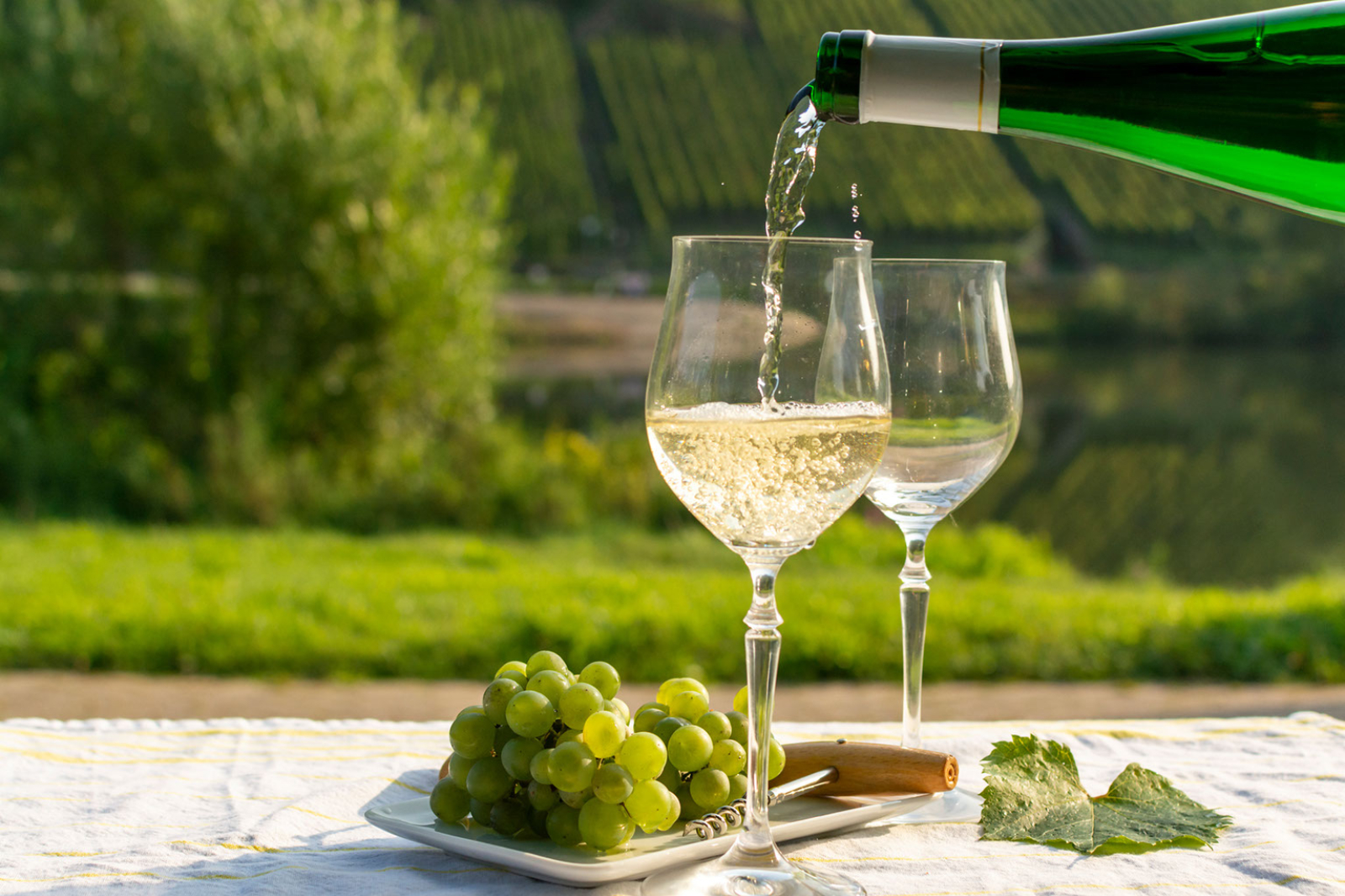
9 Remarkable Wine Producers in Germany
Germany may be best known for its beer, but those who venture into the country’s wine regions will discover a deep and rich tradition of winemaking that dates back to Roman times. With over 13 wine regions, or “Anbaugebiete,” Germany is Europe’s 4th largest wine producer. The country’s unique geography, climate, and passion for precision all contribute to the world-renowned quality of its wines.
Let’s take a look at three main regions – the Mosel, Rheingau, and Pfalz – and highlight some of the remarkable wine producers that call these areas home.
The Mosel: Elegance and Aromatic Complexity
Twisting and turning through steep valley slopes, the Mosel River has created a breathtaking wine region known for its slate soils and Riesling grapes.
Dr. Loosen:
Ernie Loosen has been a driving force in the Mosel region, producing wines that are revered for their elegance and expressiveness. Dr. Loosen’s Rieslings are iconic and represent the true essence of the Mosel terroir.
Selbach-Oster:
Focused on traditional winemaking methods, Selbach-Oster’s wines often exhibit a delightful play between sweetness and acidity, with an underlying mineral complexity.
Joh. Jos. Prüm:
This family-run estate, renowned for its late-harvest Rieslings, produces wines with incredible depth and aromatic complexity. They often age beautifully, gaining in richness and character.
Rheingau: Where Tradition Meets Innovation
The Rheingau is known for its picturesque landscapes along the Rhine River and a rich history that has shaped the modern German wine industry.
Schloss Johannisberg:
With over a thousand years of history, Schloss Johannisberg is one of the most significant Riesling producers in the world. The estate is credited with pioneering late-harvest winemaking in Germany, leading to lusciously sweet wines.
Weingut Robert Weil:
Famed for its dry and sweet Rieslings, Weingut Robert Weil combines traditional winemaking techniques with innovative practices, creating wines with unique character and style.
Kloster Eberbach:
Founded by Cistercian monks in the 12th century, Kloster Eberbach has played an essential role in the Rheingau’s wine history. Its legacy continues today, producing wines that offer a beautiful balance of fruit and minerality.
Pfalz: Germany’s Sun-Kissed Region
Pfalz, bordering France, is Germany’s most sun-drenched wine region, lending to a broader array of grape varieties and a diverse spectrum of wine styles.
Weingut Reichsrat von Buhl:
A true trailblazer in organic and biodynamic farming, Reichsrat von Buhl produces wines with a sense of purity, showcasing the unique terroir of the Pfalz region.
Weingut Müller-Catoir:
With a legacy spanning over 200 years, Müller-Catoir crafts wines that are expressive, crisp, and loaded with personality. Their Rieslings, in particular, are celebrated for their individuality and elegance.
Weingut Ökonomierat Rebholz:
Known for its uncompromising dedication to quality and sustainability, Rebholz’s wines are a testimony to the region’s potential, with each bottle revealing the subtleties of its vineyard origin.
Sip and Savor History
Germany’s wine regions offer a remarkable variety, from the biting (but balanced) acidity of Rieslings from the Mosel to the robust Spätburgunders of the Pfalz.
So the next time you find yourself pondering a wine selection, consider the aromatic complexities of a Mosel Riesling or the sun-kissed robustness of a Pfalz red. In every glass of German wine, you’ll find a sip of history, a taste of the land, and a toast to the talented hands that made it.
Cheers, or as they say in Germany, “Prost!”
Start your wine tour search here.
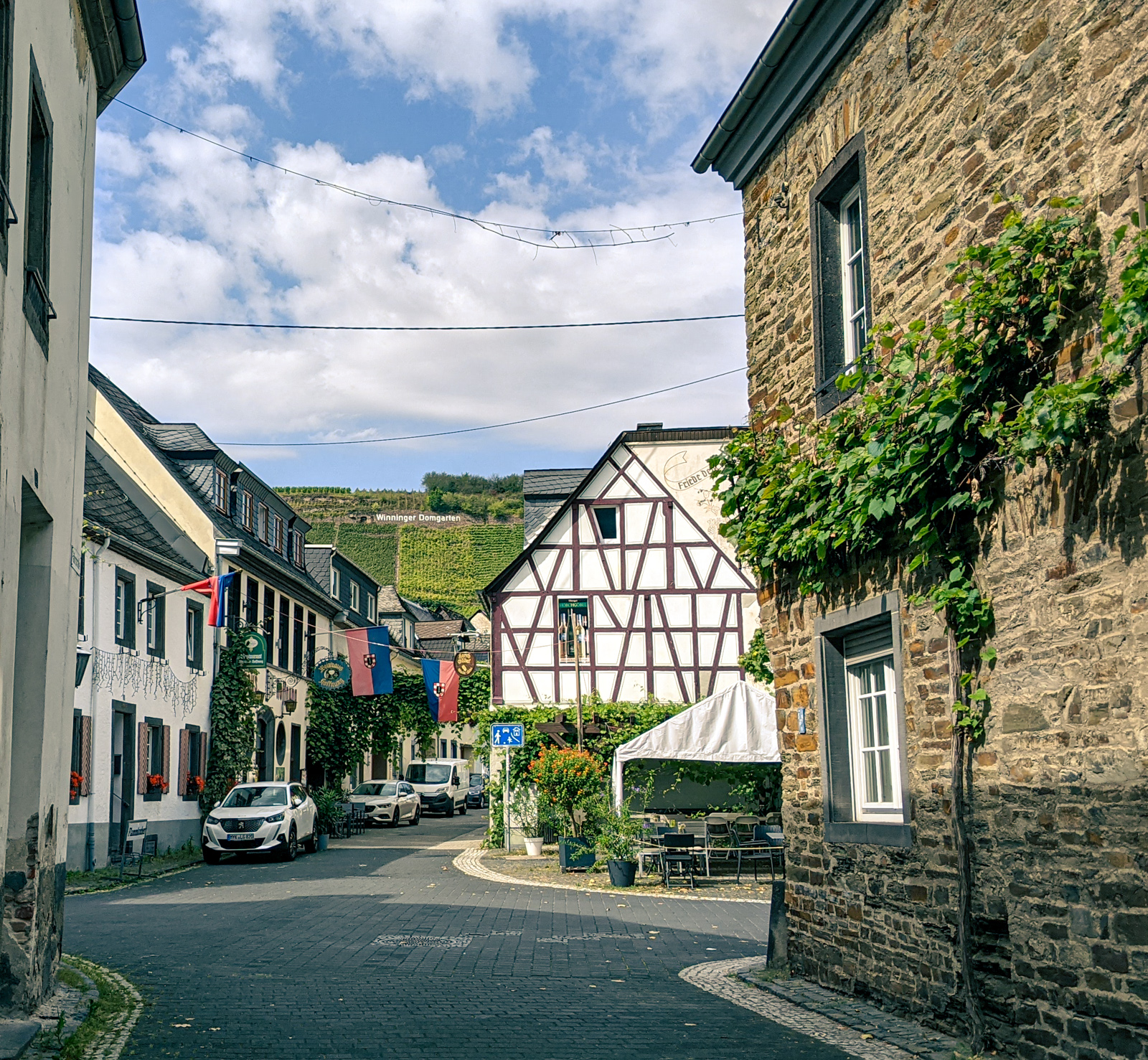
The Best Germany Wine Regions
Germany is the fourth largest wine-producing country in Europe and is famous for its high-quality white wines, particularly Riesling wines. The country has 13 wine regions and over 100 wine-growing areas, each with its unique terroir, grape varieties, and wine styles.
Did you know that Riesling isn’t always sweet? Before we go too far, it’s good to learn more about the German wine classification system.
Your Guide to the Most Notable Wine Regions in Germany.
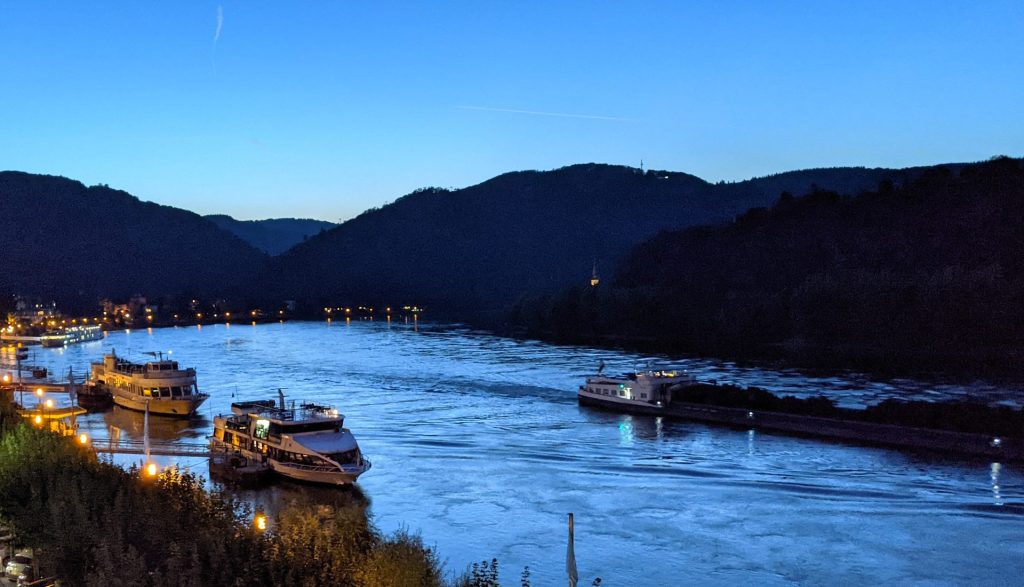
Mosel
The Mosel wine region is located along the River Mosel from the France-German border to where it joins the Rhine River. In the center of the region, the area known as the ‘Middle Mosel’ has a reputation for producing top-quality wine. The villages of Piesport, Bernkastel, and Wehlen have some of the best vineyards in the region.
The vineyards in the Mosel region, planted on steep slopes with slate soil along the banks of the river Mosel, benefit from the sun-facing slopes and the reflected light from the river, creating ideal conditions for growing high-quality grapes. The Riesling produced in the Mosel region is known for its high acidity, aromatic, and floral qualities.
The wine history of the Mosel region dates back to the Roman Empire when the Romans first cultivated grapes along the river banks. Today, the Mosel is one of the most prestigious wine regions in Germany and produces some of the world’s finest Riesling wines.
Rheingau
The Rheingau wine region is located along the River Rhein, not far from Frankfurt. The wine region has a long wine-making tradition dating back to the 12th century when the Cistercian monks established the first vineyards in the area. This is a small but prestigious region producing primarily dry-style Riesling wines.
The Rheingau produces elegant and refined Riesling wines that are well-balanced, with medium to full body, and have a distinct ripe peach characteristic. The majority of the vineyards surround the villages of Johannisberg and Rüdesheim, where excellent red wines from the Spätburgunder (Pinot Noir) grape are produced in addition to the primary Riesling wine.
Pfalz
The Pfalz is the second largest wine-growing region in Germany and its vineyards can be considered a continuation of the Alsace region of France. The region is to the east of the Haardt Mountains and is the driest and sunniest wine area in Germany. The Pfalz has a long wine-making history and Riesling is the most widely planted variety with a reputation for high-quality wines. Other wines include Müller-Thurgau, Grauburgunder (Pinot Gris), and Weißburgunder (Pinot Blanc).
The vineyards around the towns of Forst and Deidesheim are noted for being the most established quality vineyards. This area, known as Mittelhaardt, produces a riper, more full-bodied style of Riesling.
Baden
The Baden wine region is the most southern of Germany’s wine regions and is the warmest wine-growing area in the country. This region is known for its high-quality Spätburgunder (Pinot Noir) which is the most widely planted variety in Baden, but Müller-Thurgau, Grauburgunder (Pinot Gris), Weißburgunder (Pinot Blanc), and Riesling are all represented in this region.
The wine history of Baden dates back to the Roman Empire when the Romans first established vineyards in the area. Today, the Baden is considered one of the top wine regions in Germany, producing elegant and well-balanced wines with a distinctive character.
Nahe
The Nahe wine region, one of the smallest in Germany, is located between the Mosel and Rheinhessen areas. The best vineyards are along the Nahe River between the villages of Bad Kreuznach and Schlossböckelheim. The steep south-facing slopes produce excellent Riesling with characteristics that combine the pronounced acidity of the Mosel with the slightly more full body and riper fruit flavors of the warmer German wine regions.
The best way to understand the differences and similarities between the German wine regions is to visit and see for yourself the steep slopes, charming villages, and castles perched on hilltops along the rivers of Germany.
The next best way is to purchase wines from the different regions and taste for yourself the variety of wine styles from Germany. We’ve helped you with a list of some remarkable German wine producers to look for.
Start your wine tour search here.
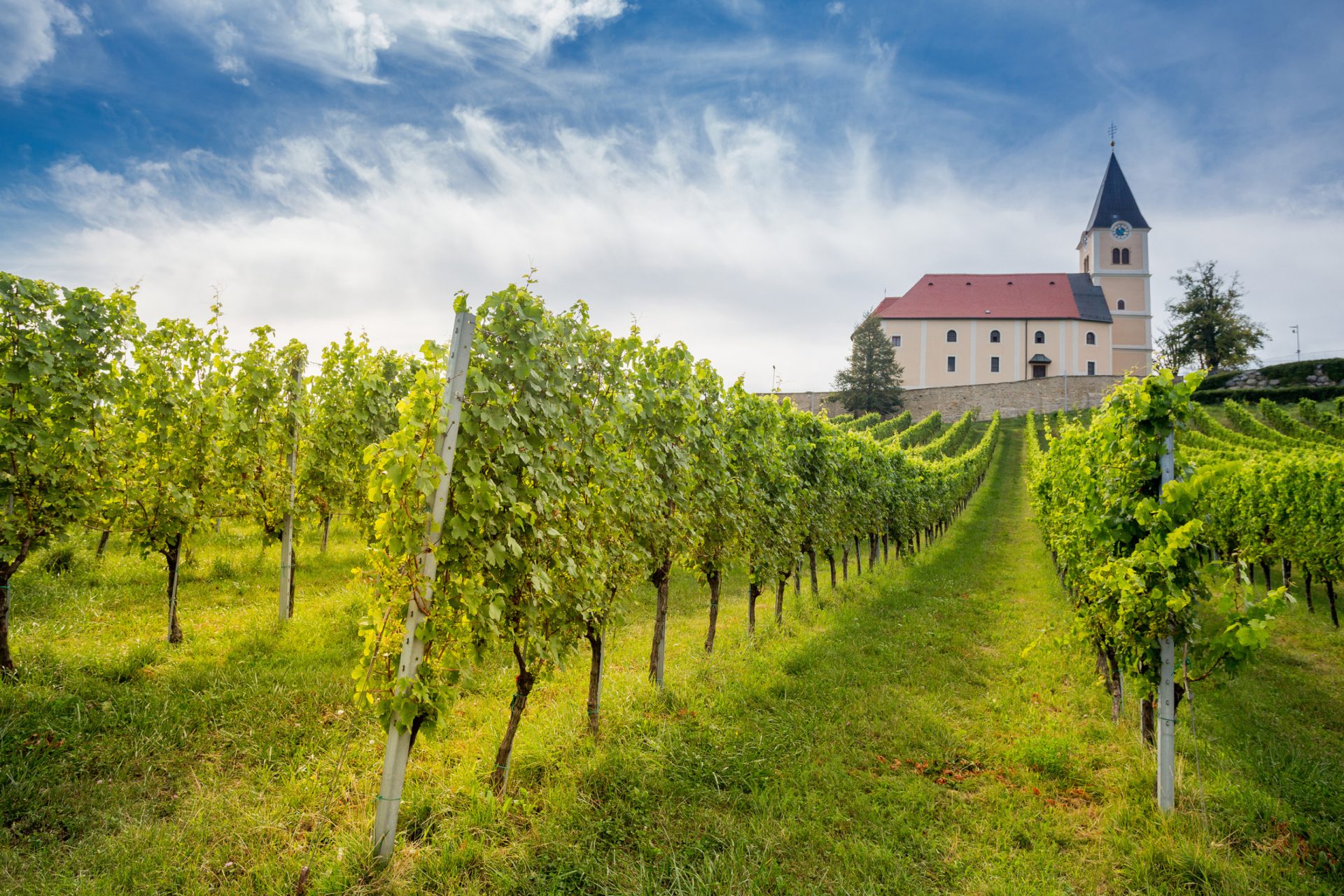
5 Hidden Gem Wine Regions in Europe
When it comes to European wine regions, many of us are familiar with the big names like Bordeaux, Tuscany, and Rioja. But there’s so much more to discover. These lesser-known wine regions will give you a chance to taste incredible wines and discover some unique areas of Europe.
Uncover the distinctive wines and fascinating histories of these hidden gem wine regions.
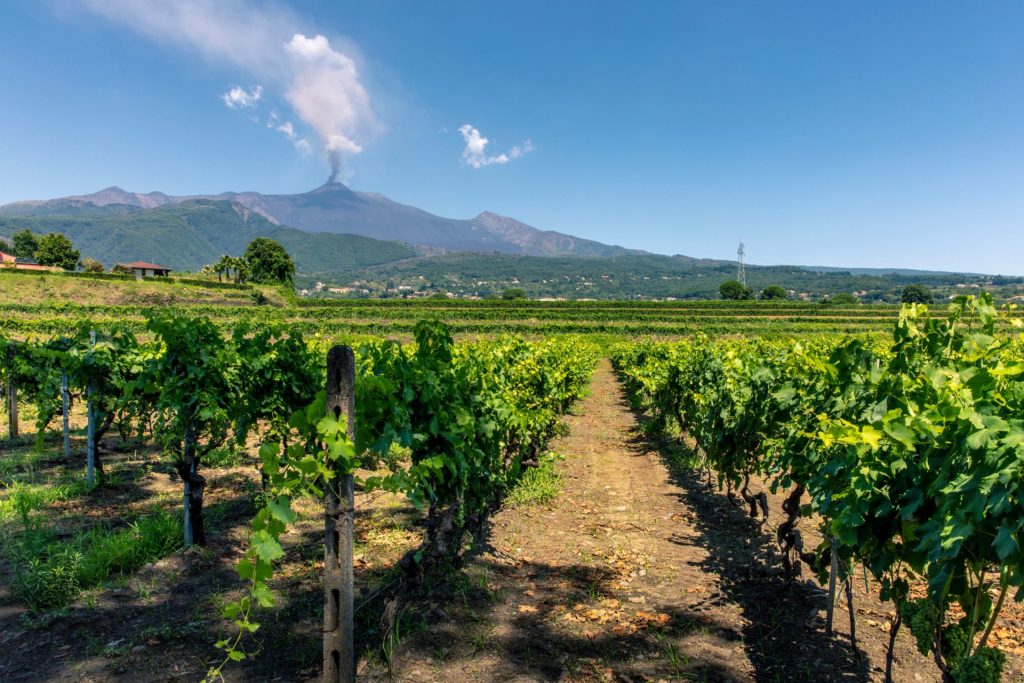
Styria, Austria:
Styria (or Steiermark), Austria, is a beautiful region tucked away in the southeastern part of Austria. What sets it apart is not just its breathtaking landscapes of steep rock slopes but also its exceptional white wines. The star of the show here is Sauvignon Blanc – imagine vibrant acidity, citrusy flavors, and that lovely mineral touch. The wine history of Styria goes way back to Roman times, so you’re sipping on history with every glass!
To get there, you can fly into Graz, the capital city, and rent a car to explore charming wine villages like Kitzeck and Gamlitz.
Etna, Sicily, Italy:
Located on the slopes of Mount Etna, Europe’s most active volcano, the Etna wine region in Sicily offers a unique terroir for wine production. The volcanic soil, high altitudes, and coastal influences make it perfect for unique wines. The Nerello Mascalese and Nerello Cappuccio grapes produce a red wine with vibrancy, elegance, and a unique minerality that the volcanic soils create.
Catania is your airport of choice, and from there, you can rent a car or join a guided tour to check out the wineries around the magnificent mountain.
Alentejo, Portugal:
Welcome to Alentejo, a wine region in the southern part of Portugal with vast landscapes, rolling hills, and ancient vineyards. In the typical blends, Aragonês (also known as Tempranillo) and Trincaderia grapes are used, and because there are a couple of distinctive climates in the region, the style of wine will differ. In the hotter, drier south and central regions, the wine produced is richer with more black fruit flavors than in the north, where the climate is cooler and wetter and produces more elegant wine. The winemaking history of Alentejo goes back over 2,000 years, so there’s a lot of tradition in each bottle.
To get there, you can fly into Lisbon, then rent a car to explore the beautiful countryside and picturesque towns like Évora.
Jura, France:
Head to eastern France and find what may be the world’s best-kept secret, Jura. This gem of a wine region won’t remain ‘hidden’ much longer. The charming region is located between Burgundy, France, and Switzerland. Jura wines are distinctive, with Vin Jaune as the most famous. The wine is made from the local Savagnin grape variety and is produced with a process similar to Sherry. It’s a special wine that undergoes a one-of-a-kind aging process in oak barrels, giving it this lovely nutty, oxidative character. And don’t neglect their sparkling wine, Crémant du Jura, and the deliciously complex white wines made from Savagnin and Chardonnay grapes.
For some incredible scenery, you can fly into Geneva or Lyon, and from there, rent a car to explore the vineyards and picturesque villages like Arbois and Château-Chalon.
Tokaj, Hungary:
Situated in northeastern Hungary in the foothills of the Carpathia Mountains, Tokaj has a long winemaking tradition dating back to the 16th century and is recognized as a UNESCO World Heritage site. This historic wine region is renowned for its sweet wines, Tokaji Aszú. This noble rot wine is made from grapes affected by botrytis cinerea, resulting in concentrated flavors of apricot, honey, and exotic spices.
Although Tokaj is famous for its sweet Tokaji wine with the Furmint grape as the principal variety, modern winemaking is producing dry wine wines using the same Furmint grape that gives us wine with high acidity and flavors of apples.
To travel to Tokaj, fly into Budapest and take a scenic drive or join a guided tour to explore the vineyards and visit traditional wine cellars.
By venturing off the beaten path and exploring these lesser-known wine regions in Europe, you’ll find unique wine experiences, stunning landscapes, and a sense of discovery.
Cheers to your next wine adventure!
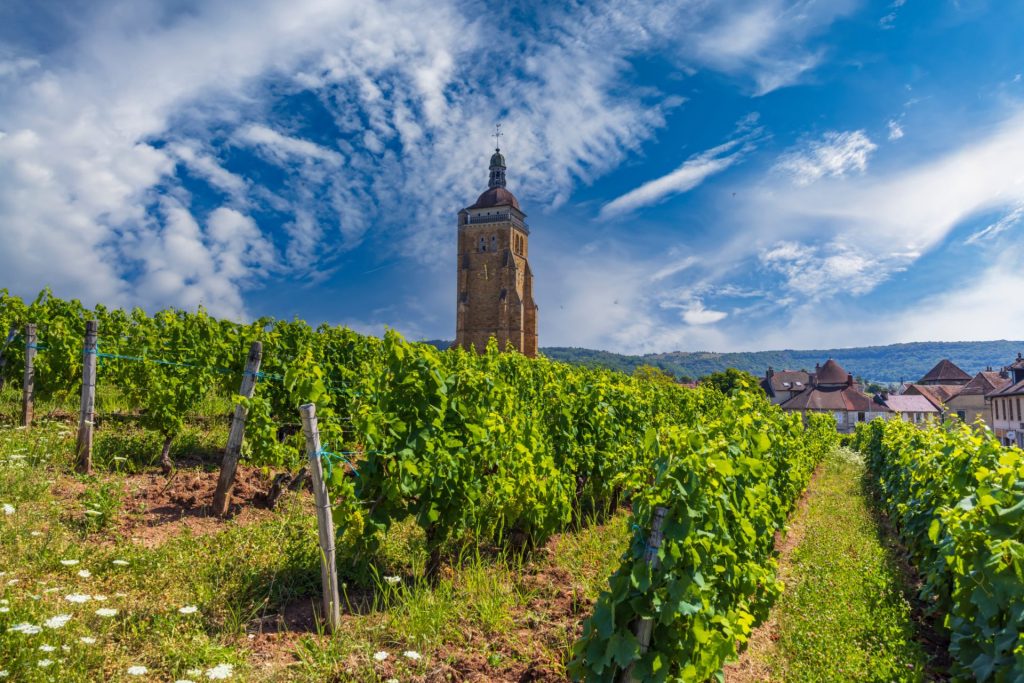
Learn More
Add these 5 books to your library.
5 Books That Will Teach You Everything About Wine
While you don’t need to be a wine industry professional to enjoy a wine tour or...
Start your wine tour search here.
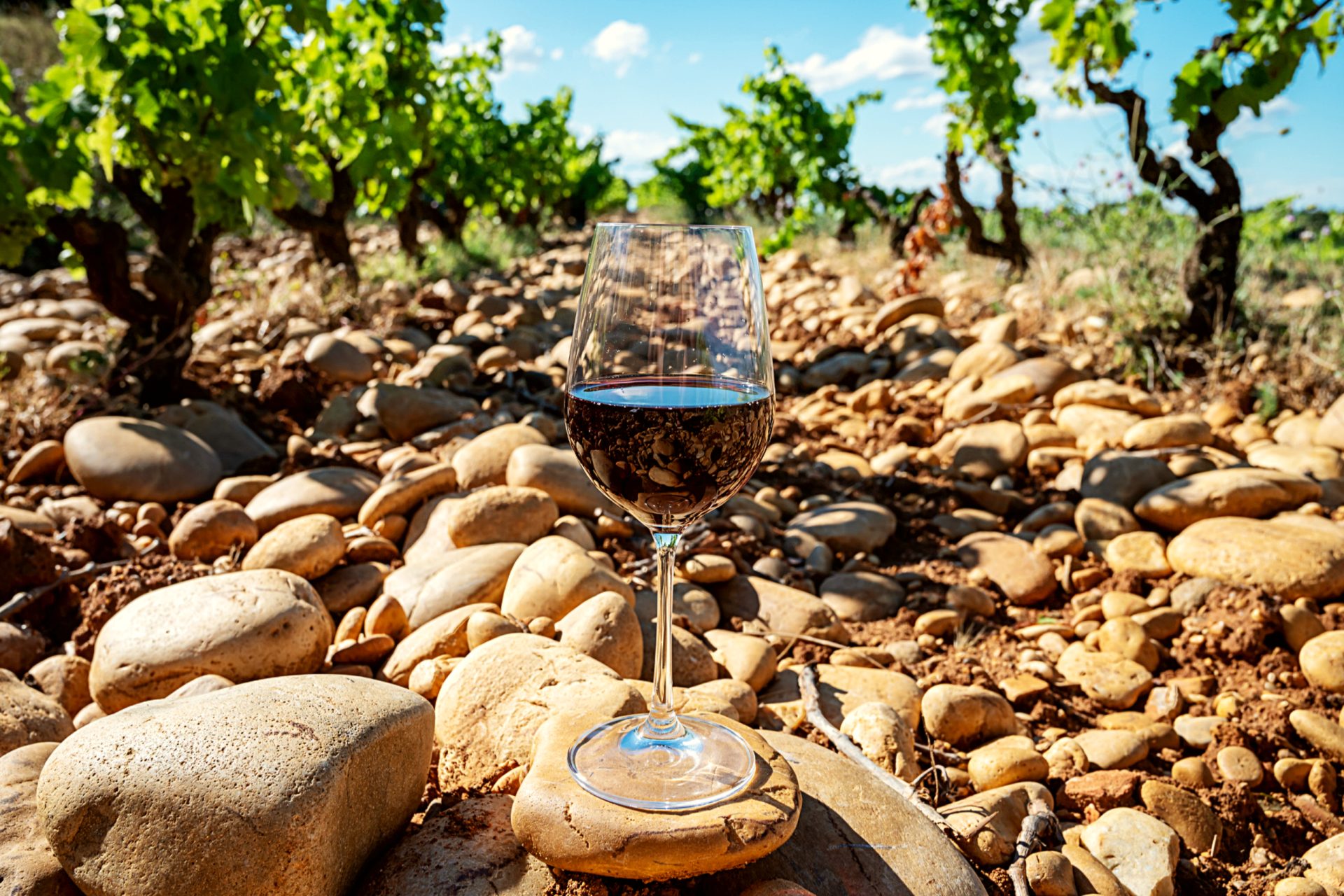
5-Day Rhône Valley Itinerary
Before you start your journey,
learn more about the Rhône Valley and its amazing wines.
A Beginner’s Guide to Rhône Wines
Vineyards of Diversity and Distinction In the wine world, the Rhône Valley is...
Top Wine Appellations of the Rhône Valley
Your Guide to the Southern & Northern Rhône Wine Regions We summarized...
Discover the best of Rhône Valley wines
on this 5-day self-guided itinerary.
Day 1
Arrival in Southern Rhône – Avignon
Arrive in Avignon, the gateway to the Southern Rhône and a city rich in history with its Palais des Papes (Papal Palace). Check into your hotel and take the rest of the day to explore the city. Dine at one of the city’s excellent restaurants and enjoy local cuisine paired with a glass of Côtes du Rhône.
Recommended Hotel:
Hotel De L’Atelier
Day 2
Châteauneuf-du-Pape
After breakfast, head to the historic wine region of Châteauneuf-du-Pape. Visit a few wineries, such as Domaine du Vieux Télégraphe or Château de Beaucastel, to sample the robust reds the area is known for. In the afternoon, take a stroll around the ruins of the Châteauneuf-du-Pape castle and enjoy the breathtaking views of the vineyards. Return to Avignon for dinner.
Day 3
Gigondas and Vacqueyras
Spend your day exploring the vineyards of Gigondas and Vacqueyras. Both are known for their bold Grenache-based reds. Wineries such as Domaine de Longue Toque in Gigondas and Domaine de la Verrière in Vacqueyras are worth visiting. Enjoy a picnic lunch amid the vineyards. In the evening, return to Avignon and perhaps attend a performance at the city’s famous theater festival if your visit coincides.
Day 4
Travel to Northern Rhône – Tain-l’Hermitage
Travel north to Tain-l’Hermitage, the heart of the Northern Rhône. Check into your hotel and spend the afternoon exploring the town. Stop in at Paul Jabolet wine bar and restaurant in the city center for small bites and taste their wine list one glass at a time. Or enjoy a generous charcuterie board with staff-recommended wines at Le Bateau Ivre with a view of the footbridge across the Rhône River.
Recommended Hotel:
Fac & Spera Hôtel et Spa
Day 5
Côte-Rôtie and Condrieu
Your final day is dedicated to exploring the regions of Côte-Rôtie and Condrieu. Visit top estates like Domaine Guigal and Domaine Jamet in Côte-Rôtie and enjoy their powerful yet elegant Syrah. Then, head to Condrieu to explore their world-renowned Viognier. The panoramic view from the vineyards over the Rhône River is not to be missed.
Return to Tain-l’Hermitage for a farewell dinner, perhaps at Restaurant Le Mangevins, known for its excellent wine list featuring local Rhône wines.
Notes:
Remember that advance booking is advisable for most wineries, especially the more famous ones.
You should not drive if you will be drinking, and this is a wine-centric itinerary, after all. So, let someone else do the driving, and find a wine guide to plan your wine tastings.
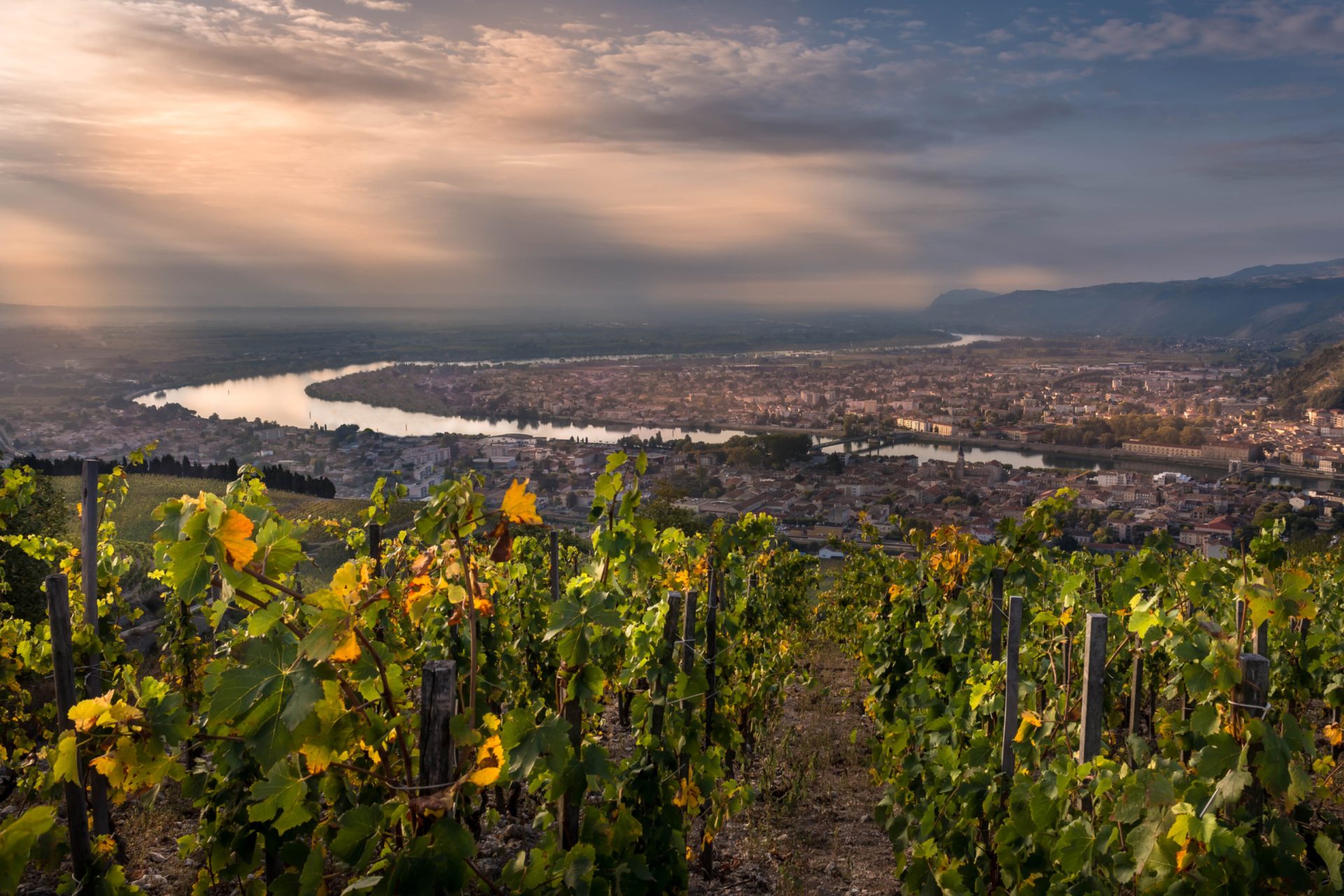
Top Wine Appellations of the Rhône Valley
Your Guide to the
Southern & Northern Rhône Wine Regions
We summarized the differences between the Southern and Northern Rhône Valley in our beginner’s guide, but now let’s dig into the top appellations and get a deeper understanding of this historic wine region.
Southern Rhône Appellations
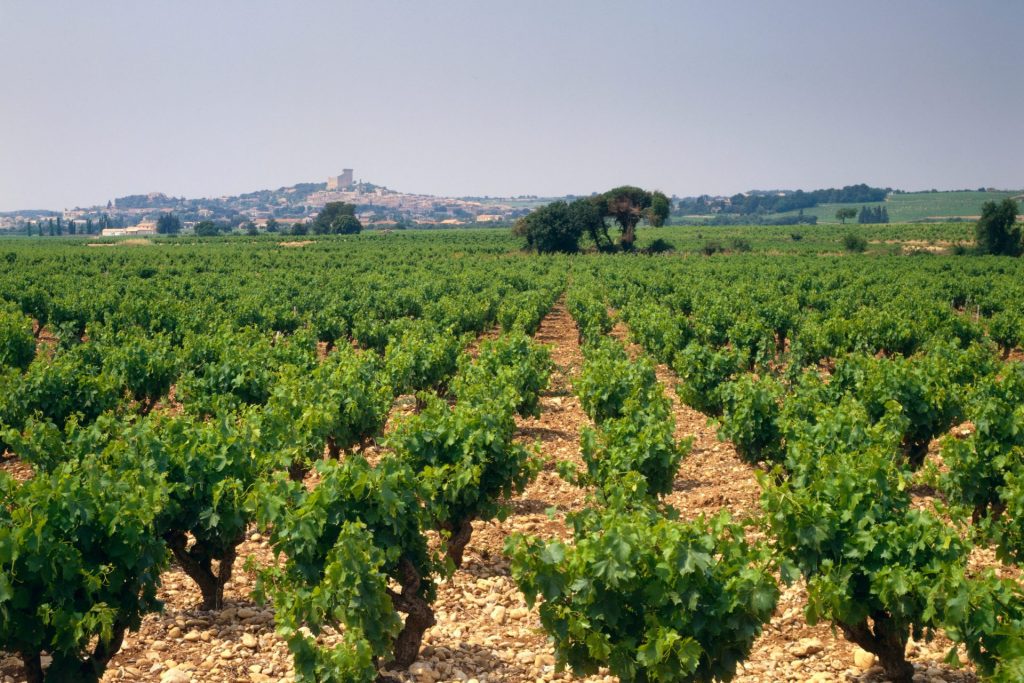
The Southern Rhône, with its hot, dry climate, is renowned for its fruit-forward, full-bodied wines. A major difference between the southern and northern Rhône Valley is the extensive use of grape blends in the south. While there are 13 different gapes that can make up a Southern Rhône wine, the primary red grape varieties are Grenache, Syrah, and Mourvedre (widely called simply ‘GSM blends’).
Grenache is a versatile grape that can be used to make both light and full-bodied wines. Syrah is a grape that is known for its dark fruit flavors and its ability to age well. Mourvèdre is a grape that adds structure and complexity to red wines.
The specific blend of grape varieties used in a Southern Rhône red wine will depend on the winemaker’s style and the particular terroir of the vineyard. The blend will also be affected by the age of the vines, the yield per vine, and the winemaking techniques used.
6 of the most prominent wine appellations of the
Southern Rhône Valley
Châteauneuf-du-Pape:
Perhaps the most famous wine from the Southern Rhône, Châteauneuf-du-Pape is a robust, full-bodied red wine predominantly made from Grenache, along with a blend of up to 13 other grape varieties such as Syrah and Mourvèdre. This wine is often characterized by its robust structure, ripe berry fruit flavors, and complex spicy notes.
Gigondas:
This red wine is also primarily made from Grenache, complemented by Syrah and Mourvèdre. Gigondas wines are typically bold and powerful, with flavors of ripe dark fruit, spice, and a distinct earthy quality.
While Châteauneuf-du-Pape can get very pricey, you’ll be able to find Gigondas in the US for around 25% less than its more expensive cousin.
Vacqueyras:
Similar to Gigondas, Vacqueyras wines are Grenache-dominant blends that often include Syrah and Mourvèdre. They tend to have a bit more elegance and freshness compared to their neighbors, with plenty of ripe fruit, spice, and a hint of minerality.
Côtes du Rhône and Côtes du Rhône Villages:
Here’s where we think the Southern Rhône shines. These are general designations for wines produced across the region. Côtes du Rhône wines can offer excellent value, often delivering plenty of ripe, juicy fruit flavors, mild tannins, and a smooth finish. The “Villages” designation denotes a higher quality tier, with more concentration and complexity in the wines.
There are 22 ‘village’ designations, and the wine label will show the village name along with the “Côtes du Rhône” appellation. Cairanne, Rasteau, Sablet, Seguret, and Valreas are some of the top village names to know.
To be considered for this higher tier of Côtes du Rhône Village wine, producers are required to adhere to stricter standards of grape growing and winemaking than those in the Côtes du Rhône wines.
Tavel:
Tavel is best known for its rosé wines, but some producers also make red wines. They are usually Grenache-dominant and can show a fascinating mix of ripe fruit, spice, and herbal flavors. Tavel rosés differ from the nearby Provence rosés with a deeper color, deeper fruit flavors, and a more rounded body.
Lirac:
Across the Rhône River from Châteauneuf-du-Pape, Lirac produces both red and rosé wines, mainly from Grenache, with Mourvèdre, Syrah, and Cinsault often in the blend. Lirac reds are known for their deep color, bold fruit flavors, and soft, generous texture.
The white wines of the Southern Rhône are typically made from a blend of Grenache Blanc, Roussanne, Marsanne, and Clairette. Most of the Blanc wines will produce a full-bodied and fruity wine with flavors of citrus, white flowers, and honey.
Each appellation highlights a certain wine style and showcases the terroir of the Southern Rhône. The warm Mediterranean climate of Southern Rhône gives us a variety of wines: from fruity and easy-drinking rosés to rich, full-bodied whites, and complex, intense reds.
Northern Rhône Appellations
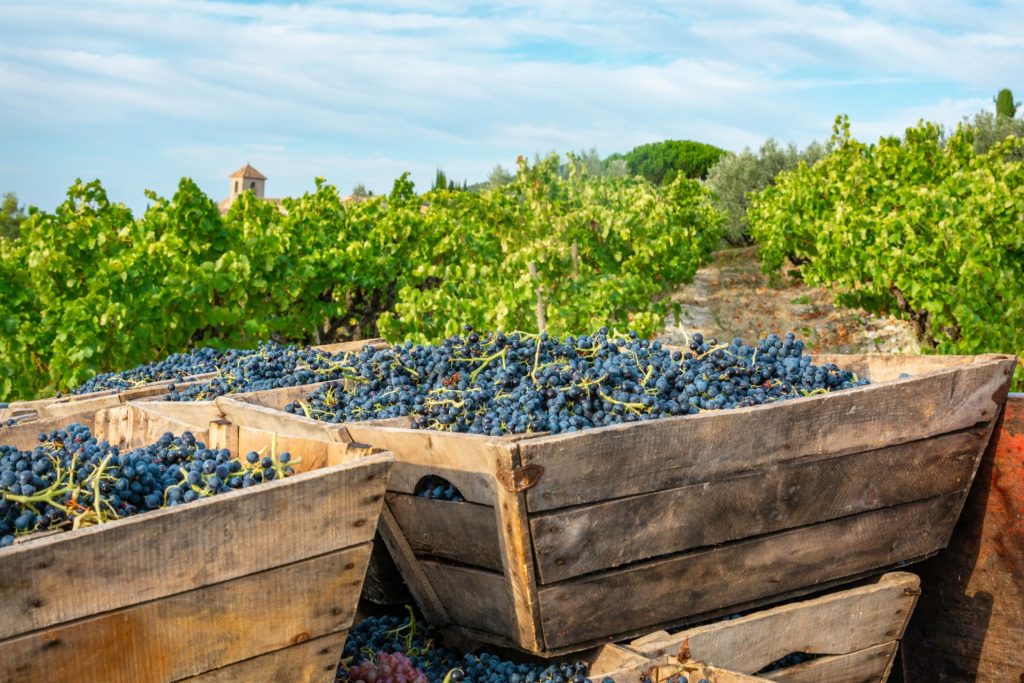
The Northern Rhône region of France produces some of the world’s most iconic and distinctive red wines, predominantly from the Syrah grape. Unlike its southern counterpart, which is known for blends, Northern Rhône focuses primarily on single-varietal wines.
The Syrah-based red wines of the Northern Rhône are typically full-bodied and flavorful, with flavors of black fruits, spices, and earth. They can be aged for many years, and they often develop complex flavors over time.
5 of the most prominent wine appellations of the
Northern Rhône Valley
Côte-Rôtie:
Translated as “roasted slope,” this region’s wines are some of the most prestigious Syrah wines in the world. Often, a small proportion (up to 20%) of Viognier, a white grape, is co-fermented with Syrah, which contributes an aromatic lift to the wine. Côte Rôtie wines are known for their remarkable depth, complexity, and longevity, often displaying flavors of dark fruit, smoked meat, and black pepper, with a distinctive floral note from the Viognier.
Hermitage:
Hermitage produces powerful, full-bodied red wines from Syrah that are known for their potential to age for decades. The wines often have intense flavors of black fruit, leather, and spice, with firm tannins that soften over time. Occasionally, small amounts of the white grapes Marsanne and Roussanne may be included in the blend.
Cornas:
Cornas is unique in the Northern Rhône as it is the only appellation that mandates its red wines be 100% Syrah. Cornas wines are typically robust and full-bodied, with flavors of dark berry fruit, spice, and earthy undertones. With age, they can develop complex notes of leather and game.
Saint-Joseph:
Saint-Joseph wines can range from lighter, more approachable styles, to more full-bodied, intense examples. Made from Syrah, often with a small addition of white grapes, these wines typically exhibit black fruit flavors, along with floral and spicy notes.
Crozes-Hermitage:
As the largest appellation in the Northern Rhône, the style of red wines from Crozes-Hermitage can vary significantly. Generally, they are made from Syrah and are often more approachable and less tannic than some of their Northern Rhône counterparts. They typically display flavors of dark fruit, spice, and sometimes a smoky, earthy quality.
Each of the wines from the Northern Rhône highlights the essence of the Syrah grape in its own unique way. From the aromatic, complex wines of Côte Rôtie to the bold, full-bodied wines of Cornas, the Northern Rhône offers a captivating exploration of Syrah for any red wine lover.
Need an itinerary?
Get inspired with this 5-Day Rhône Wine Tasting Itinerary.
5-Day Rhône Valley Itinerary
Before you start your journey, learn more about the Rhône Valley and its...
Start your wine tour search here.
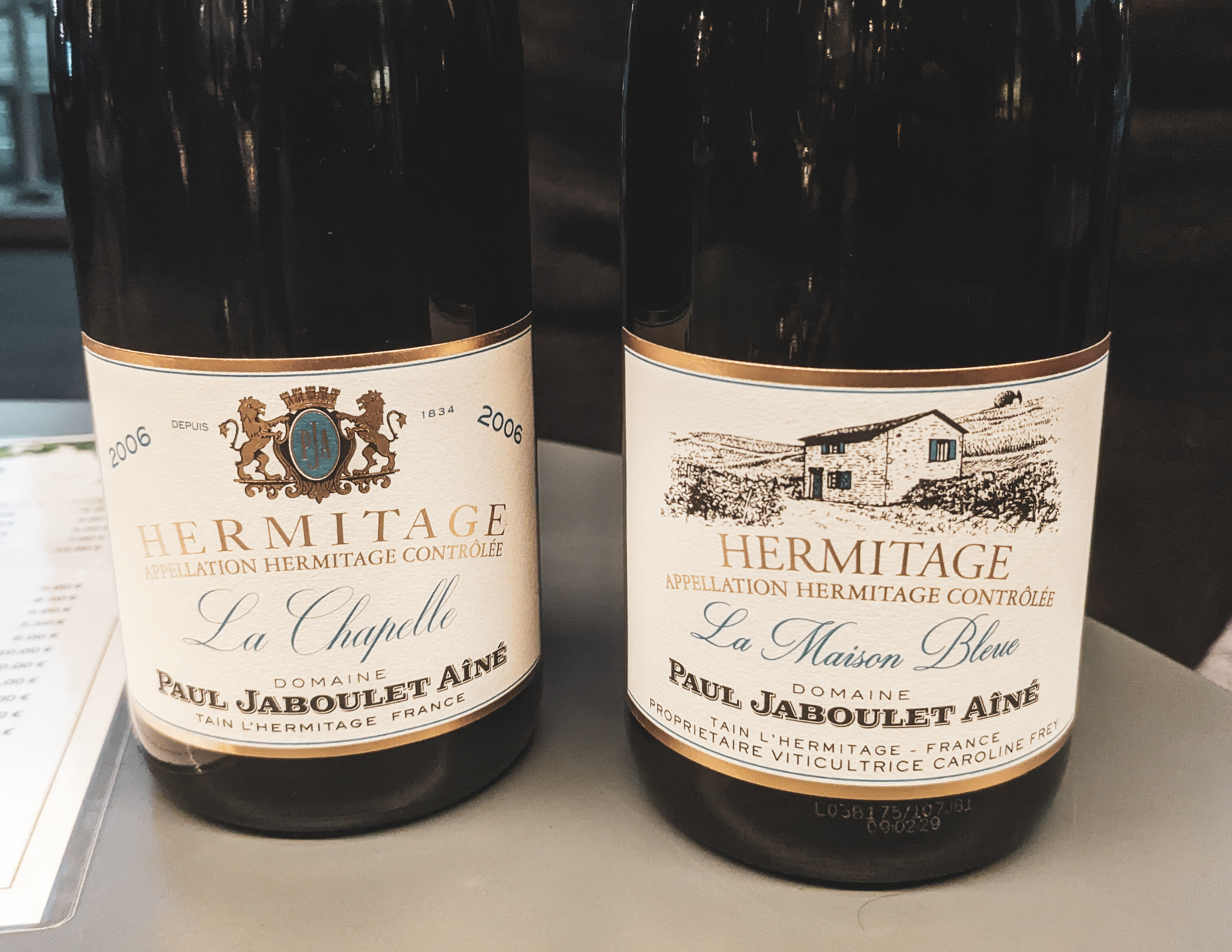
A Beginner’s Guide to Rhône Wines
Vineyards of Diversity and Distinction
In the wine world, the Rhône Valley is synonymous with quality, diversity, and intensity. In the south of France, the Rhône wine region follows the Rhône River and stretches from the bustling city of Lyon in the north to the Mediterranean Sea in the south.
It is a region rich in history, defined by its wine, and adored by enthusiasts and experts worldwide. Its vines have been thriving for over two millennia, making Rhône Valley one of the oldest wine-growing regions in France. Today, we are going to uncork the charm of the Rhône and explore its diverse wines.
Historical Vines
Dating back to the Romans’ time, who planted the first vineyards here around 600 BC, they understood the value of the region’s climate and terroir, with the Mistral wind providing a natural defense against vine diseases, and the diversity of the soils providing excellent conditions for various grape varieties.
The Rhône’s Dual Personality
When talking about the Rhône wine region, it’s important to note that it’s generally divided into two distinct parts: Northern Rhône and Southern Rhône. Each has its own climatic conditions, grape varieties, and unique winemaking traditions, resulting in a multitude of styles and flavors in the wines.
Northern Rhône: The Land of Syrah
The northern section, accounting for only a tenth of the total Rhône Valley wine production, focuses on the noble Syrah variety for its red wines. This is the land of Côte Rotie, Saint-Joseph, and the legendary Hermitage – all producing wines of breathtaking depth, and complexity. For white wines, Marsanne and Roussanne rule supreme, featuring in Saint-Peray and Hermitage Blanc. In Condrieu, with its exotic aromatics, Viognier is the only grape variety allowed.
These wines are known for their aromatic intensity and balance. Red wines typically exhibit aromas of blackberry, plum, and black pepper, with a backbone of tannin that promises excellent aging potential. The white wines, on the other hand, can be rich and full-bodied, often with flavors of stone fruit, almond, and honeysuckle.
Southern Rhône: A Symphony of Grapes
Venture south and the Rhône Valley transforms from a river of Syrah into a sea of Grenache. Here in the Southern Rhône, Grenache is the predominant variety, often blended with other grapes like Syrah, Mourvedre, and up to 13 other permitted varieties in the famed Chateauneuf-du-Pape.
Southern Rhône wines like Gigondas, Vacqueyras, and Cotes du Rhône Villages are appreciated for their bold, ripe fruit flavors, spicy notes, and approachable style. They often offer great value for money, providing a gateway for anyone looking to explore the world of Rhône wines.
The white wines of Southern Rhône, made from Grenache Blanc, Clairette, Ugni Blanc, and a few Northern Rhône standards like Marsanne and Roussanne, are equally worthy of attention. They can be a burst of freshness with flavors of citrus and peach, floral notes, and sometimes a touch of mineral complexity.
Embrace the Diversity
Rhône Valley is undoubtedly a paradise for wine lovers. From the structured elegance of the Northern Rhône Syrah to the bountiful blends of the South, there is a Rhône wine to suit every palate. The vast array of styles, coupled with the region’s deep-rooted history and the passion of its winemakers, make the Rhône a fascinating wine region to discover.
Whether you’re a wine novice or a seasoned connoisseur, the Rhône wine region invites you to uncork a bottle, savor its diverse flavors, and toast to the rich heritage that each glass embodies.
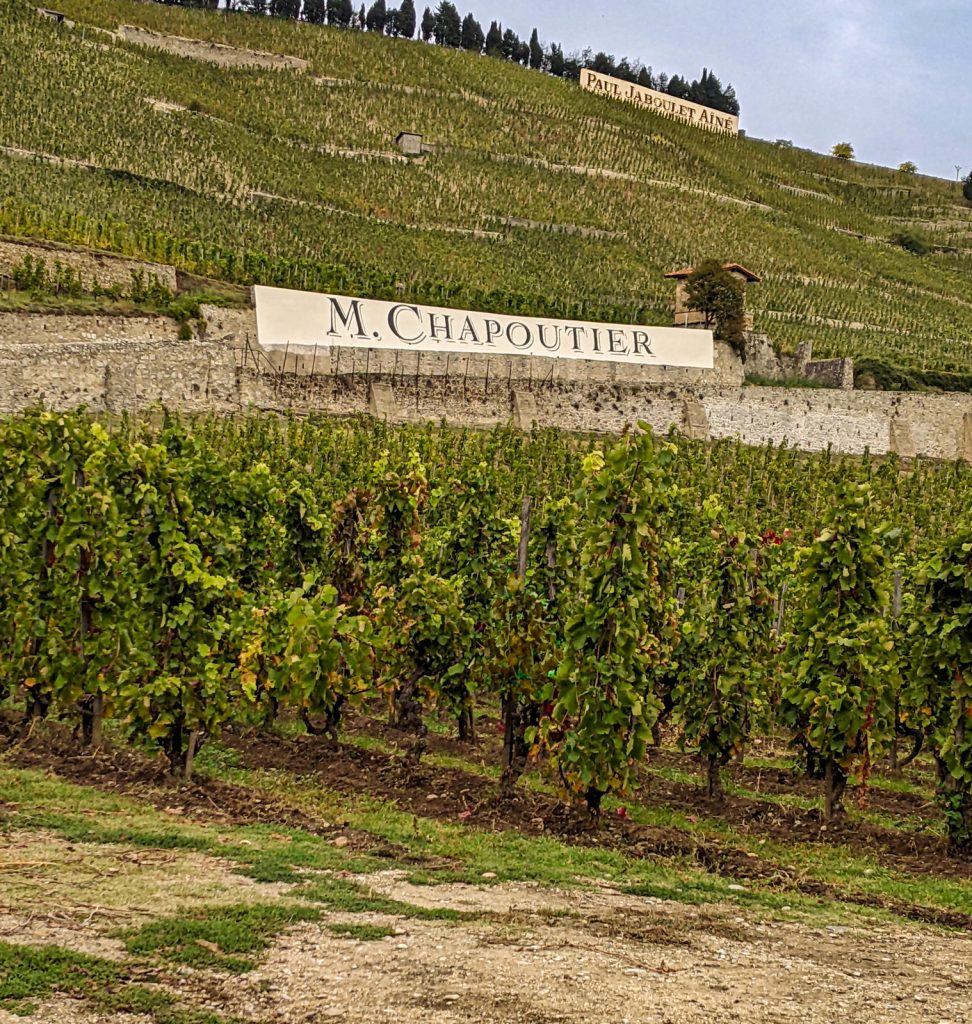
Ready to learn more?
Read the follow-up post with a deeper dive into the Rhône Valley
Top Wine Appellations of the Rhône Valley
Your Guide to the Southern & Northern Rhône Wine Regions We summarized...
Need an itinerary?
Get inspired with this 5-Day Rhône Wine Tasting Itinerary.
5-Day Rhône Valley Itinerary
Before you start your journey, learn more about the Rhône Valley and its...
Start your wine tour search here.
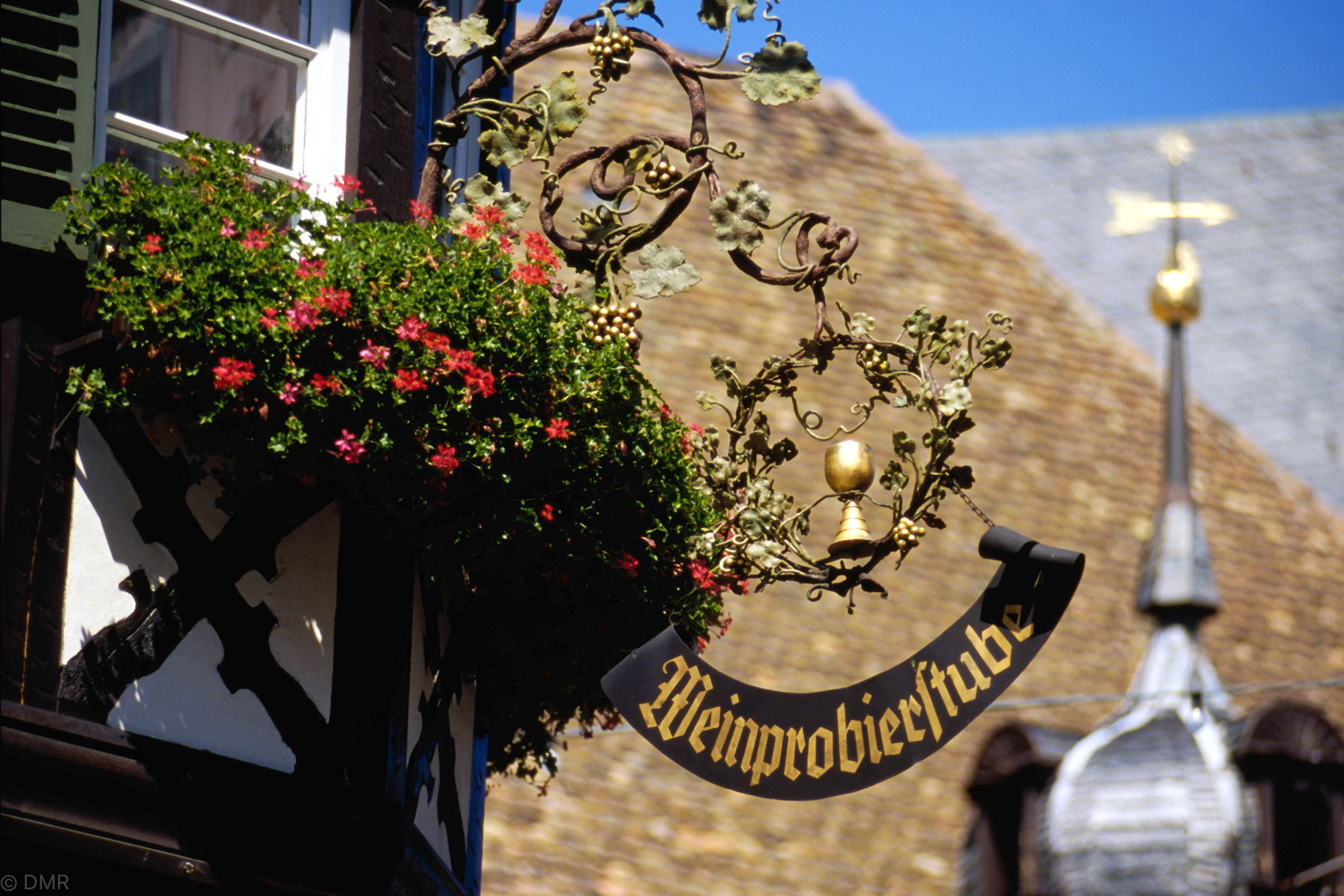
How to Decode German Wine Labels
Germany’s wine classification system is complex and challenging to understand, but we hope this post can remove some of the confusion for you.
Let’s start with something many people don’t know… Not all Riesling is sweet! In fact, German Rieslings can range from bone dry to intensely sweet, but then the question is: how do you know from looking at a label what’s dry and what’s sweet?
Luckily, German wines often include a scale on the back of the label to help you determine the sweetness level. But, if it’s not written on the label, you’ll find clues to help you.
The German word “Trocken” anywhere on the wine label tells you it’s a dry wine, but you can also look at the ABV (Alcohol By Volume) percentage to get a good sense of the sweetness.
When wine goes through the fermentation process, sugars are converted to alcohol, so a higher the alcohol means the lower the residual sugars and the drier the wine will be. And vice versa, with lower alcohol, more sugars remain, and the wine will be sweeter. That’s not too hard, right?
The Riesling grape is known for its high acidity, so many times, even a lower alcohol wine which would generally tell you that it’s on the sweeter side, is balanced by the high acidity, and the Riesling will taste drier on your palate.
Get to Know German Wine
One of the best ways to get to know German wines is to drink them! Purchase several with different sweetness levels and taste them side-by-side to get a better feel for your preferences. An even better way for learning is to visit the German wine regions for first-hand experiences.
And if you’re looking for wine pairings, a semi-sweet or sweet Riesling will pair wonderfully with spicy foods — try spicy chicken wings, Szechuan pepper dishes, or Korean kimchi.
A Guide to Understanding the German Wine Classification System
Even wine pros will sometimes have difficulty wrapping their heads around the German wine classification system. The classification system can seem complicated and overwhelming at first glance, but once you understand the basics, it’s an excellent way to navigate the world of German wine.
The wine classification system is based on the ripeness level of the grapes at the time of harvest and the wine’s sugar content, and it’s divided into two main categories: Quality Wines and Table Wines. Quality Wines are further divided into Prädikatswein and Qualitätswein bestimmter Anbaugebiete (QbA), each with their own set of classifications.
While it may take some time to become familiar with the categories, the German wine classification system is ultimately a helpful tool for finding and enjoying the perfect German wine.
Use our handy pyramid graphic below to help get a visual of the quality levels, and we’ll start explaining the categories from the bottom to the top.
Landwein
Deutscher Landwein is Germany’s table wine category made from ripe and slightly under-ripe grapes. Primarily consumed in Germany, very little is exported, so you’ll likely only find this category of wine if you visit Germany.
Qualitätswein bestimmter Anbaugebiete (QbA)
Wines in the Qualitätswein category must be produced within one of the 13 wine-growing regions of Germany, and they have to meet certain requirements regarding grape variety, ripeness, and alcohol content.
The grapes are at a fairly low level of ripeness (which, remember, less ripe means less sugar content) and range from dry to semi-sweet. The style is often indicated on the label, along with the designation Qualitätswein and the region.
Prädikatswein
These are the highest-quality wines in Germany. They are classified according to the ripeness of the grapes at harvest and include the following six categories in ascending order of ripeness:
Kabinett
Kabinett wines are made from fully ripened grapes picked at normal harvest time. This term may have originated as indicating the winemaker felt it was good enough to put in his own cabinet rather than offer it for sale.
Spätlese
Spätlese (translates to “late harvest”) wines are made from riper grapes picked at a later stage in the harvest. The later grapes are harvested, the more sugar is able to develop in the grape on the vine. However, the winemaker may choose to fully ferment the wine dry, in which case you will typically see “Spätlese Trocken” on the label.
Auslese
Auslese (translates to “select harvest”) indicates a wine made from hand-selected, very ripe grapes.
Beerenauslese (BA)
Beerenauslese (BA) (“berry select harvest”) wines are made from individually selected, overripe berries that usually were infected by botrytis cinerea or noble rot. These are rarities, harvested only when exceptional weather conditions enable the grapes to ripen to this extent. They are notable for their longevity and can age for decades.
Trockenbeerenauslese (TBA)
Trockenbeerenauslese (TBA) (“dry berry select harvest”) wines also have extraordinary longevity. These rare and treasured wines are made from individually selected grapes that are overripe and dried up almost to raisins, usually infected by noble rot and picked very late in the season. BA and TBA can’t be harvested mechanically, and each berry must be picked individually by hand, which means the wines can command extraordinary prices because of the costs involved in producing the wine.
Eiswein
Eiswein is even more unique. “Ice wine” is made from grapes as ripe as Beerenauslese that have frozen on the vine. They are harvested only under exact weather conditions and pressed while frozen and produce a highly concentrated and sweet wine.
If you’ve been hesitant to try German wines in the past, now is the perfect time to give them a chance. With the German wine classification system demystified, you can confidently explore the variety of wines available from different regions. Don’t be afraid to take a leap and experience the richness and complexity that German wines have to offer.
